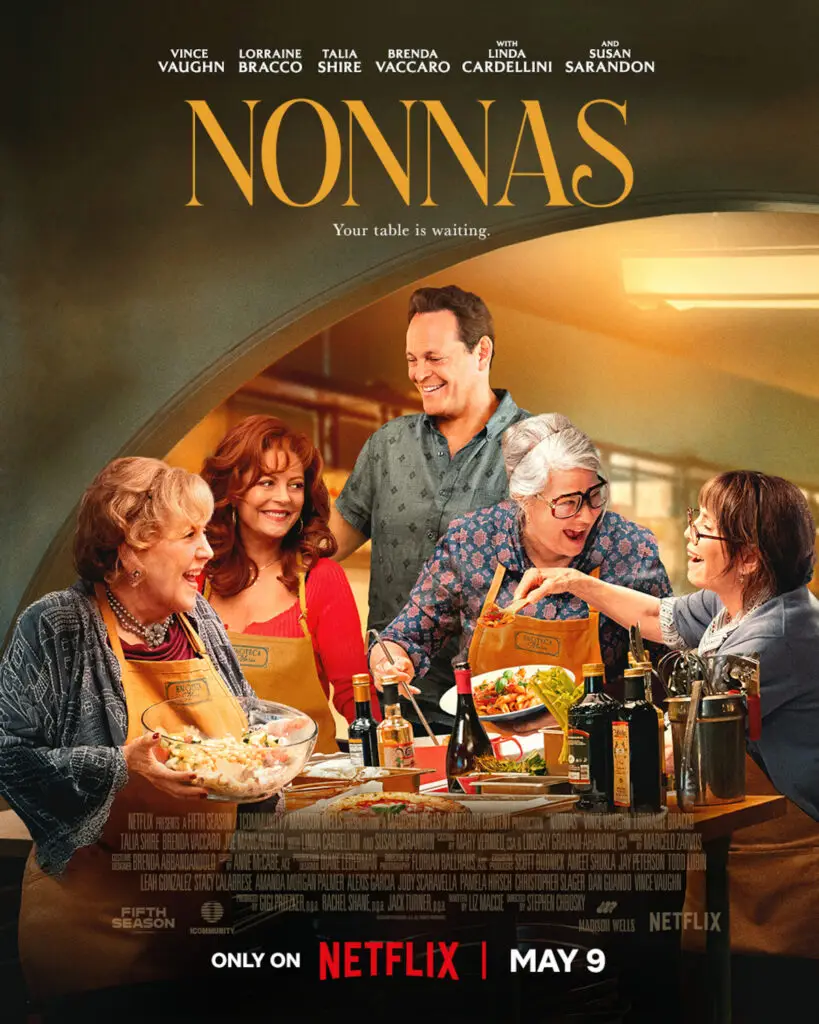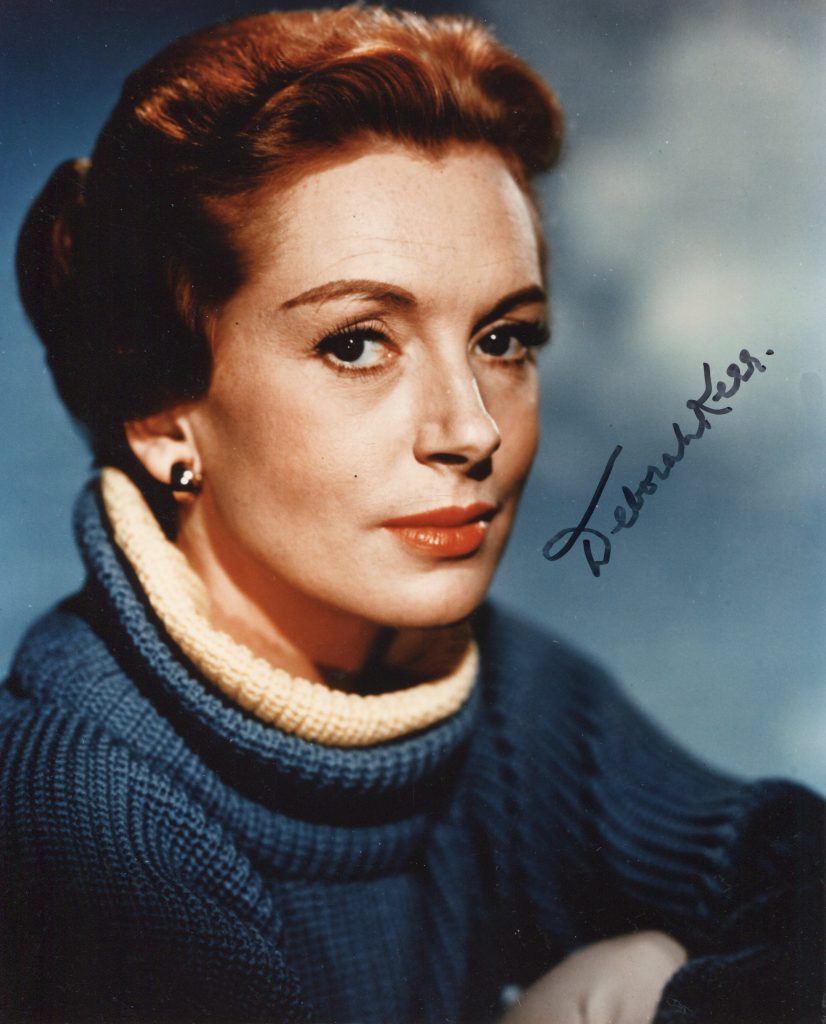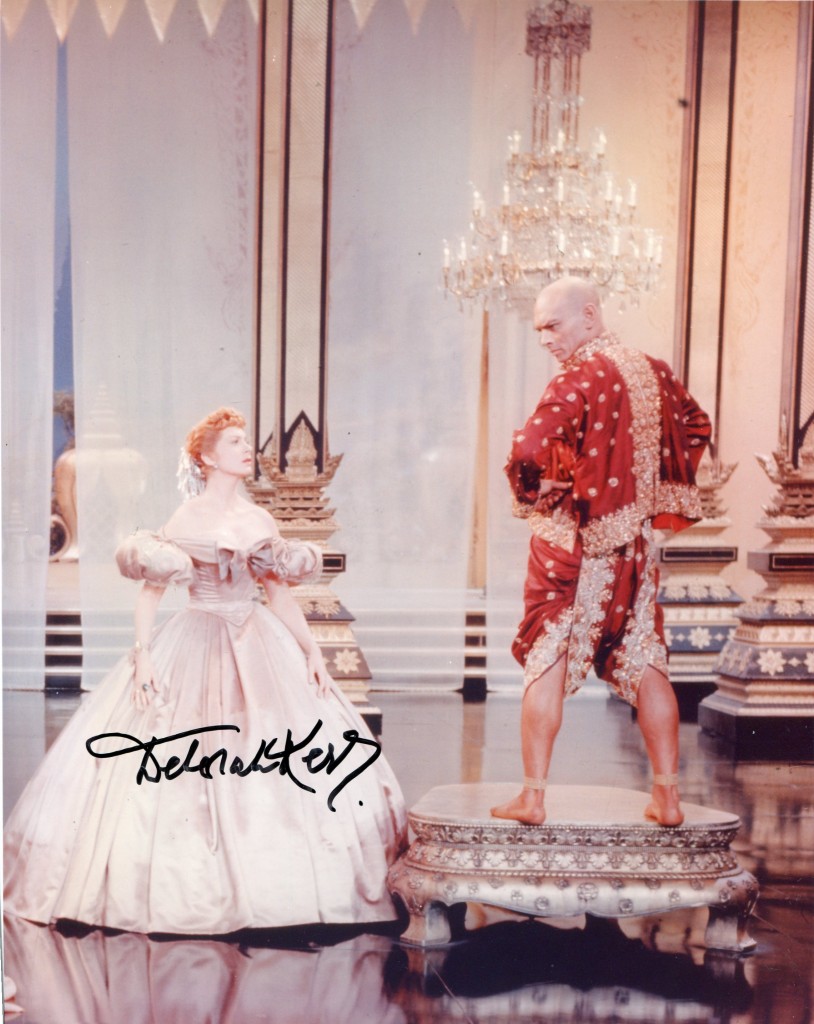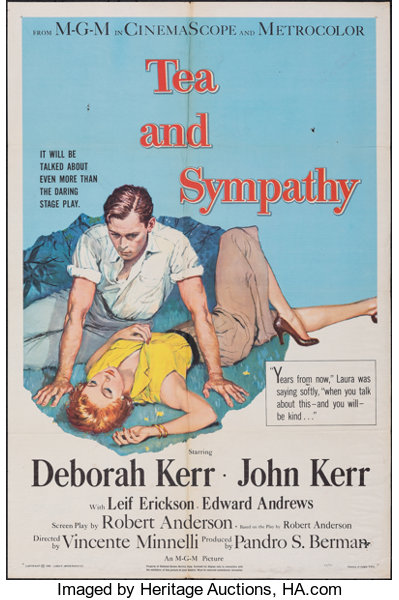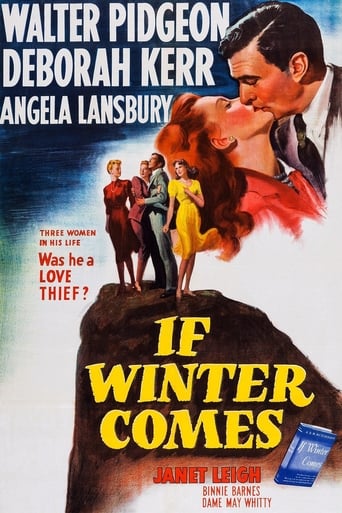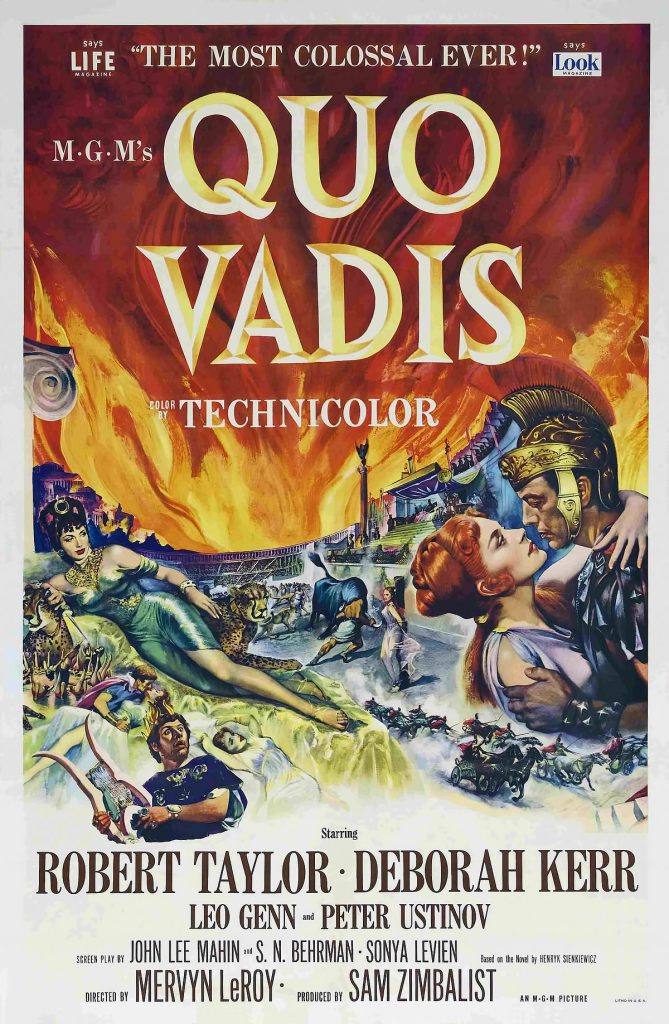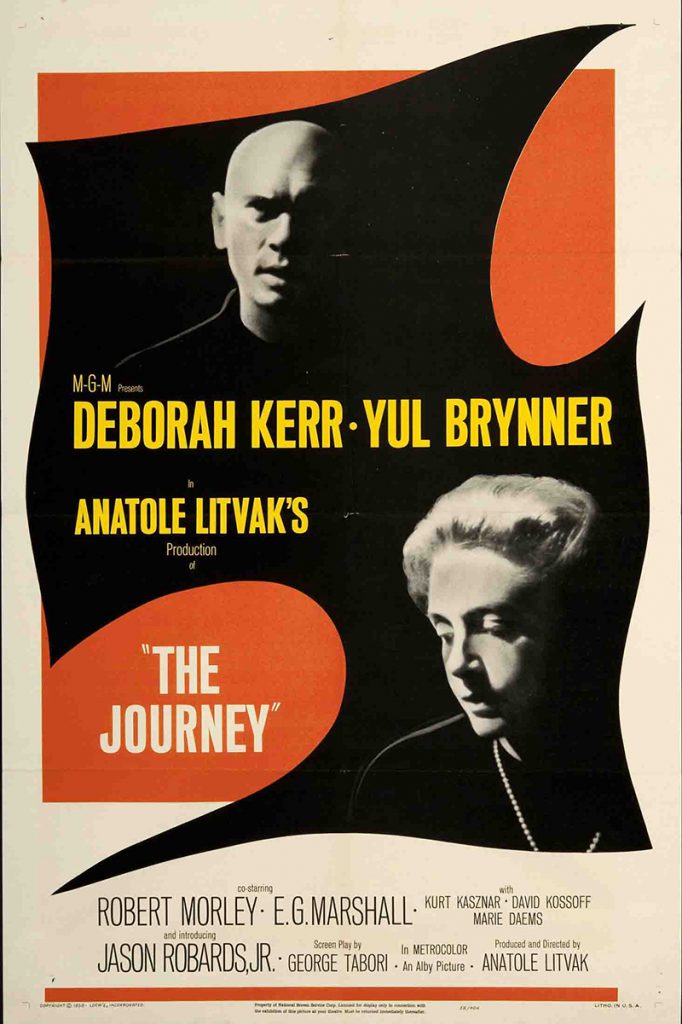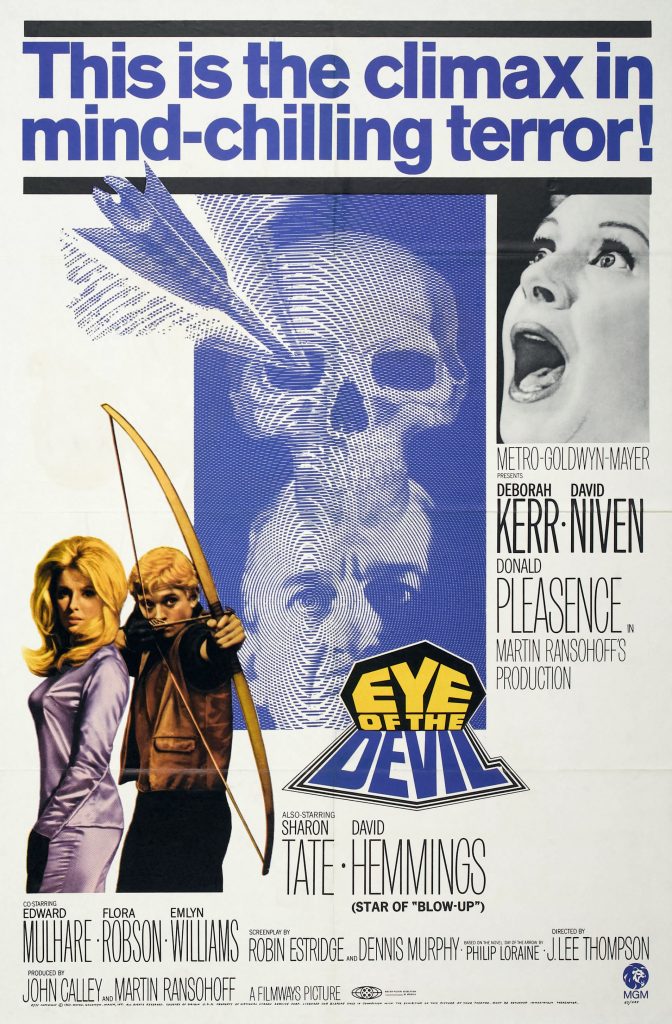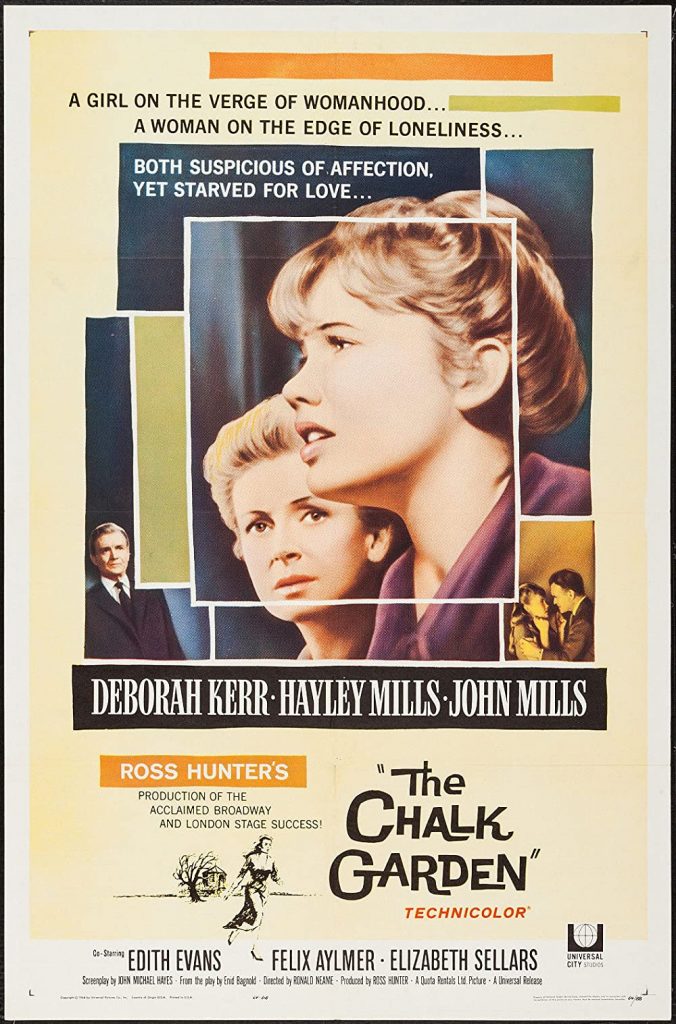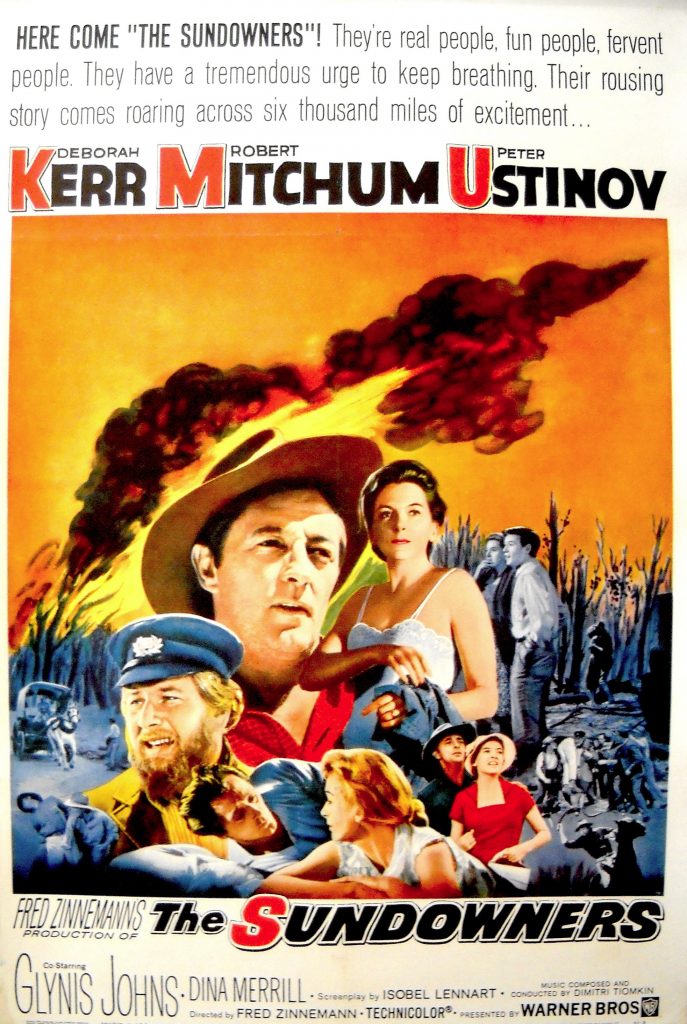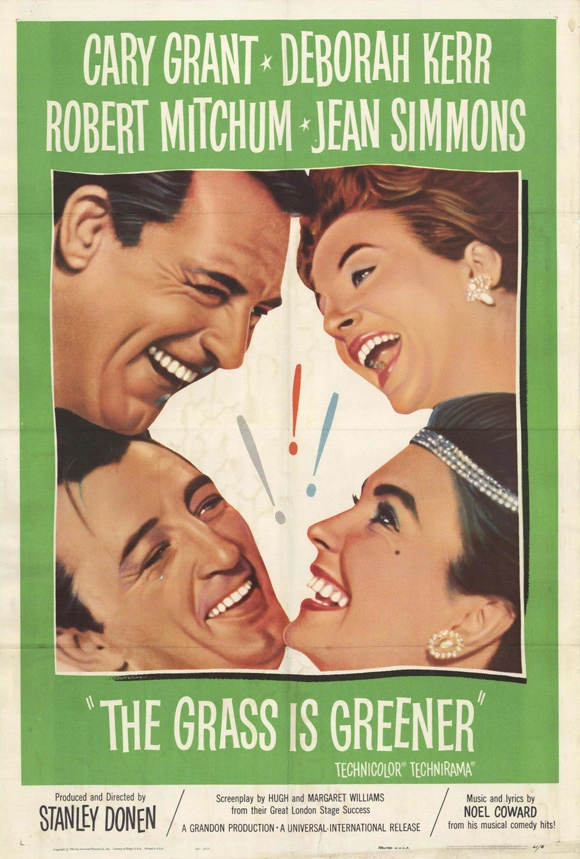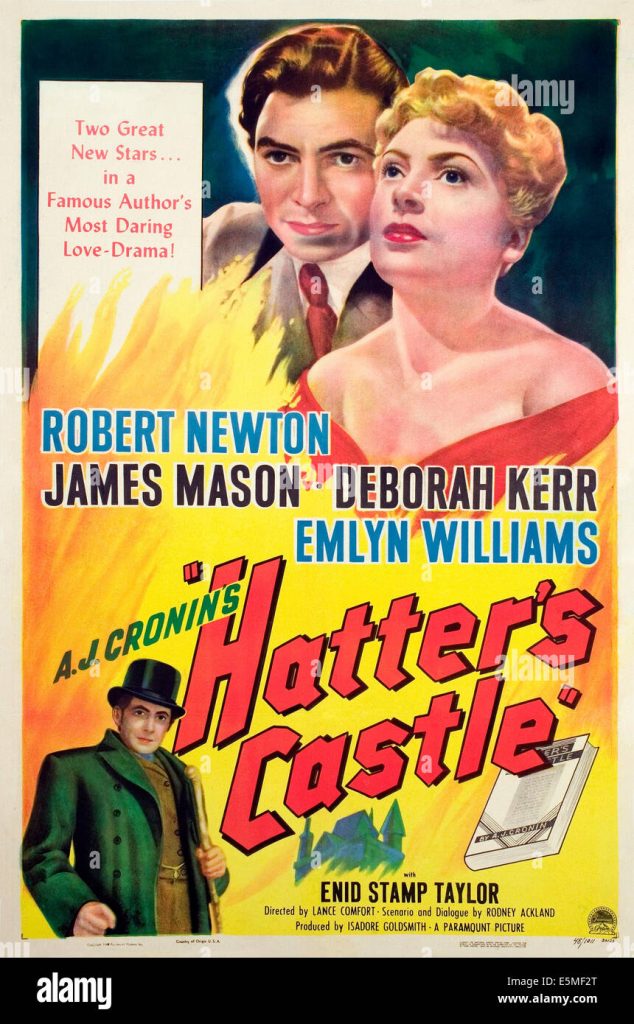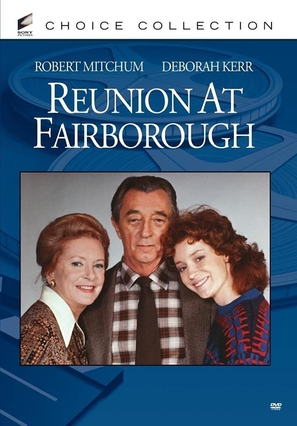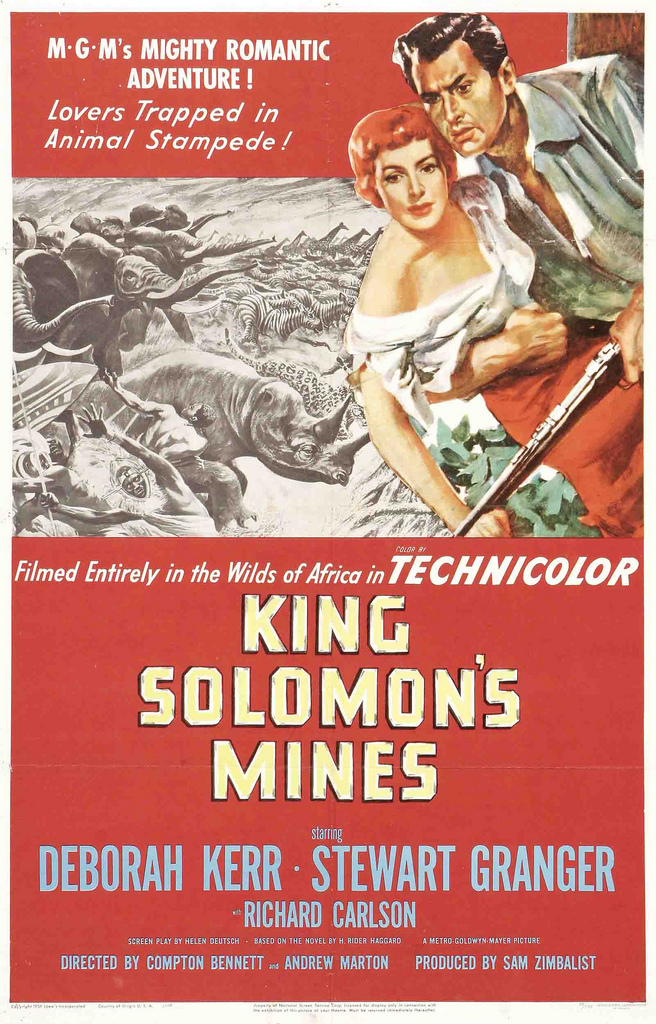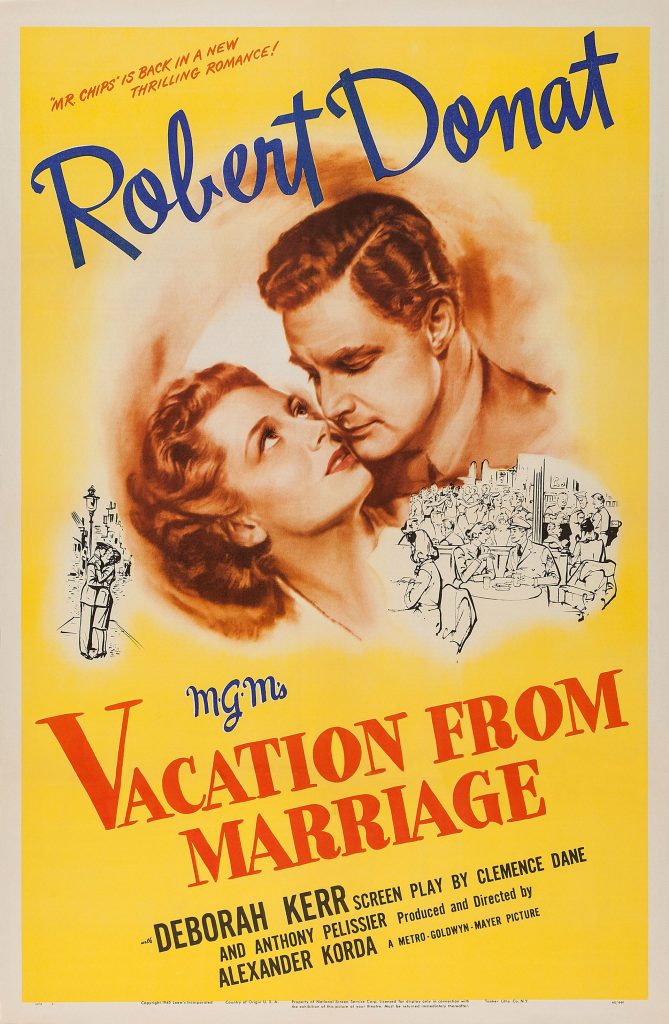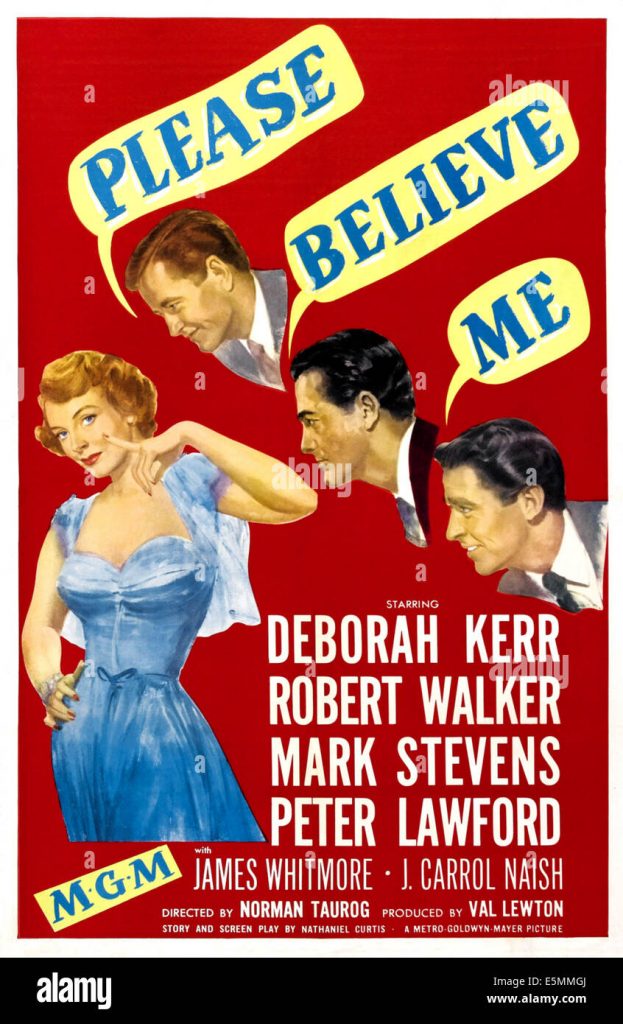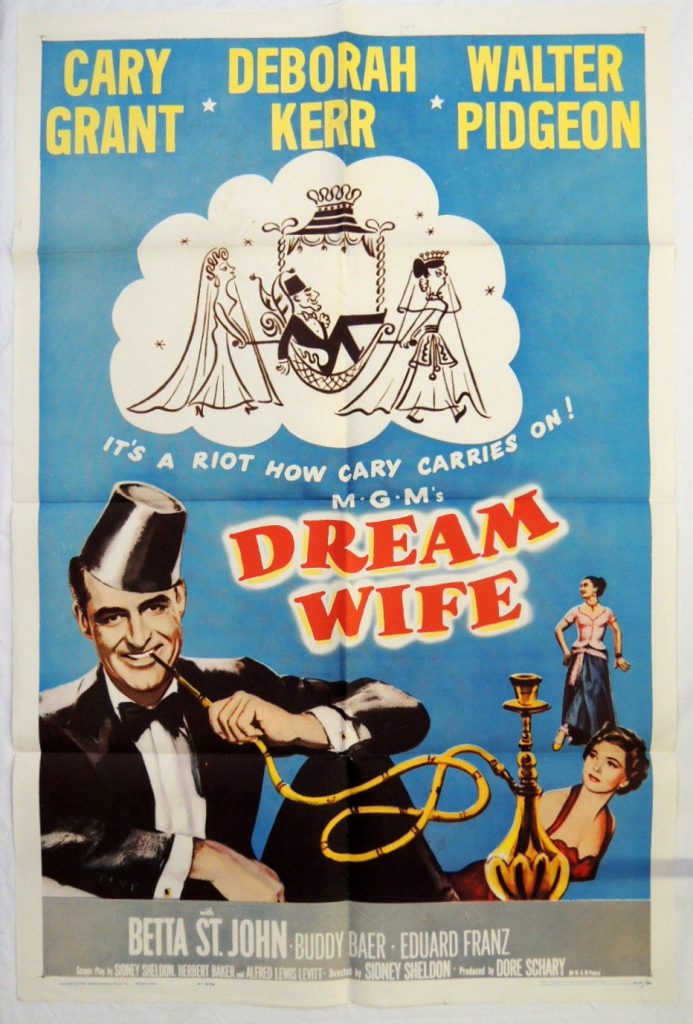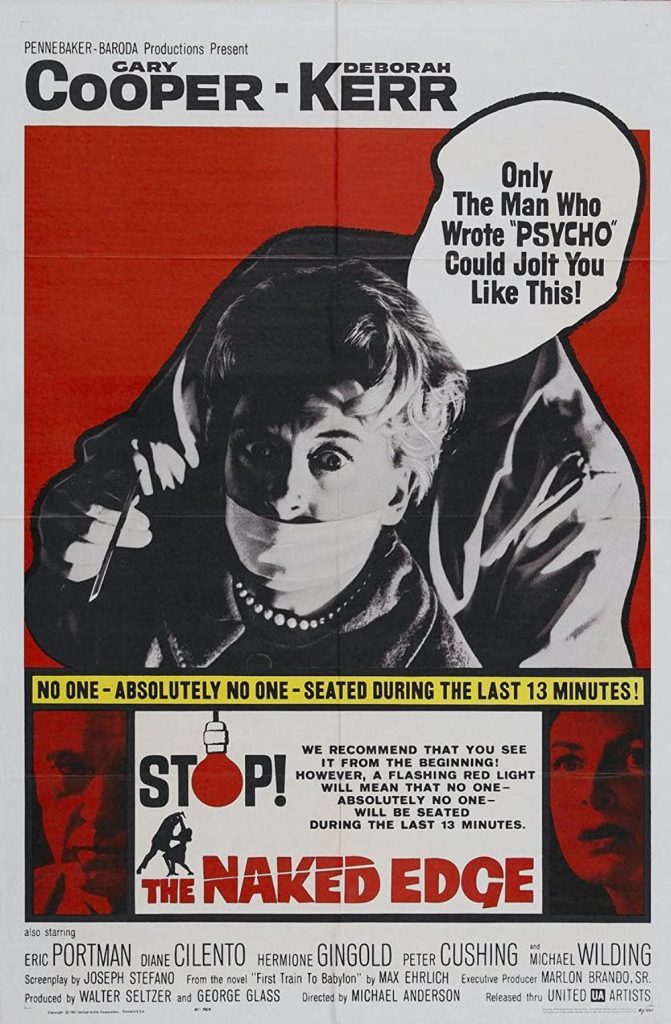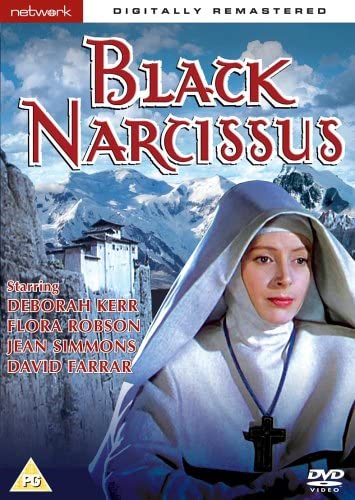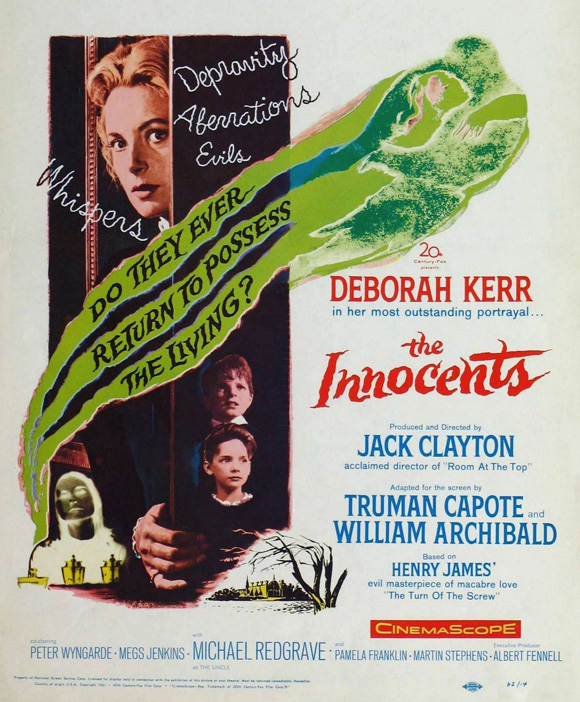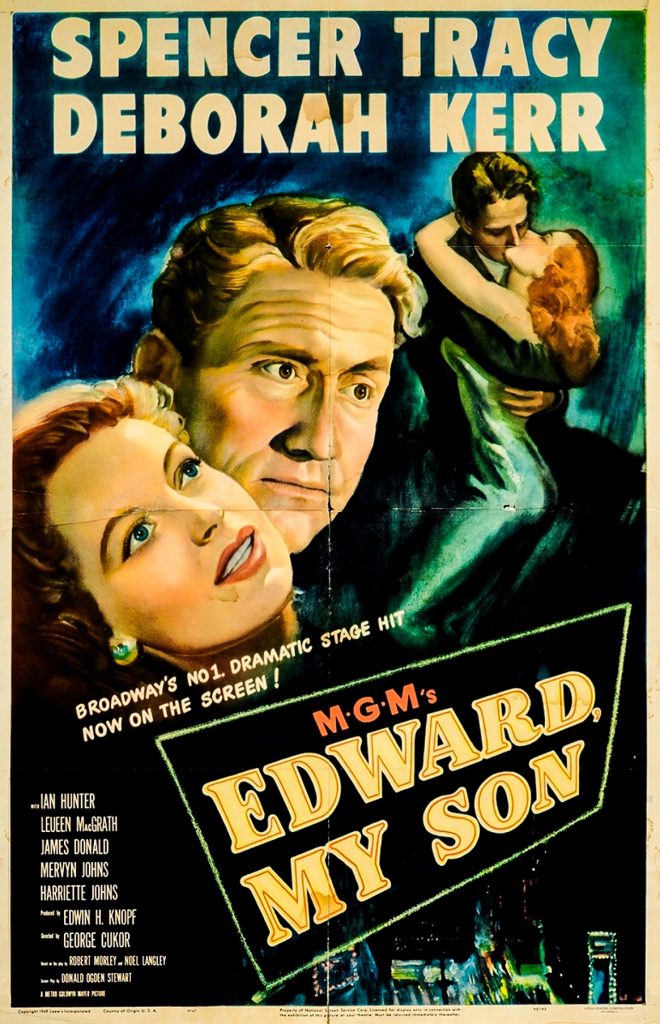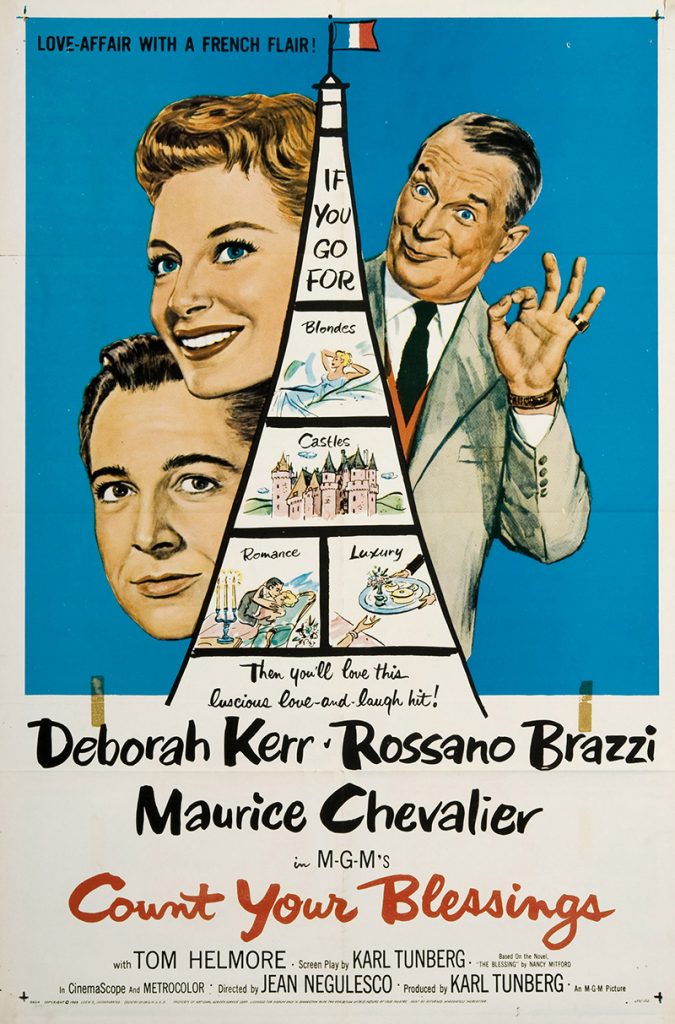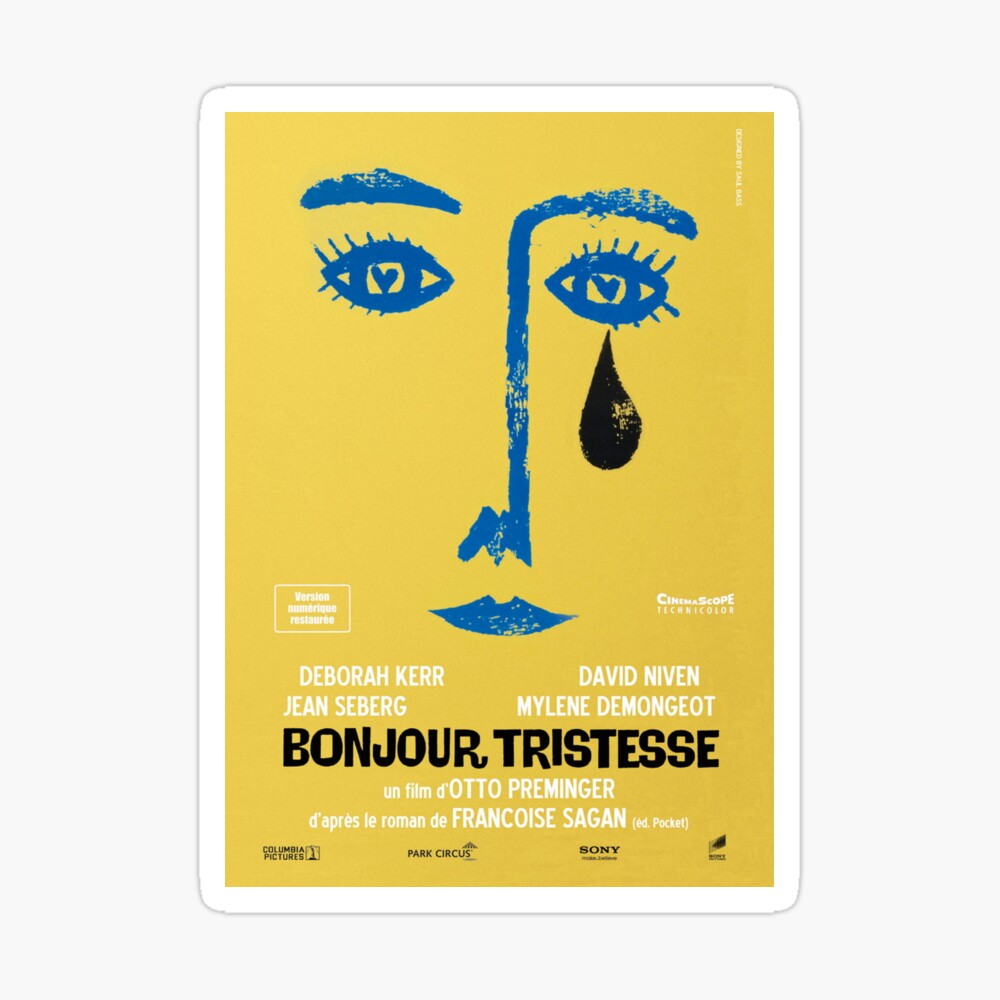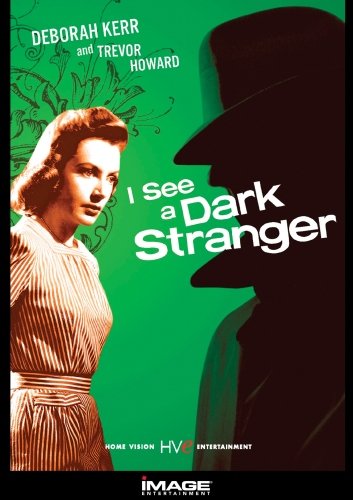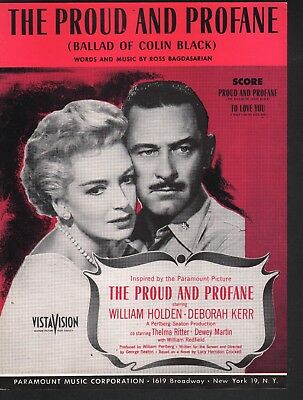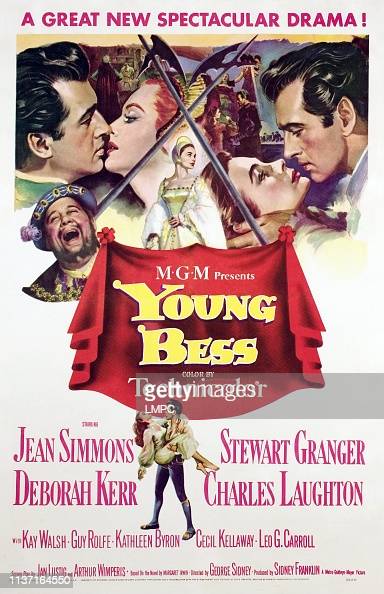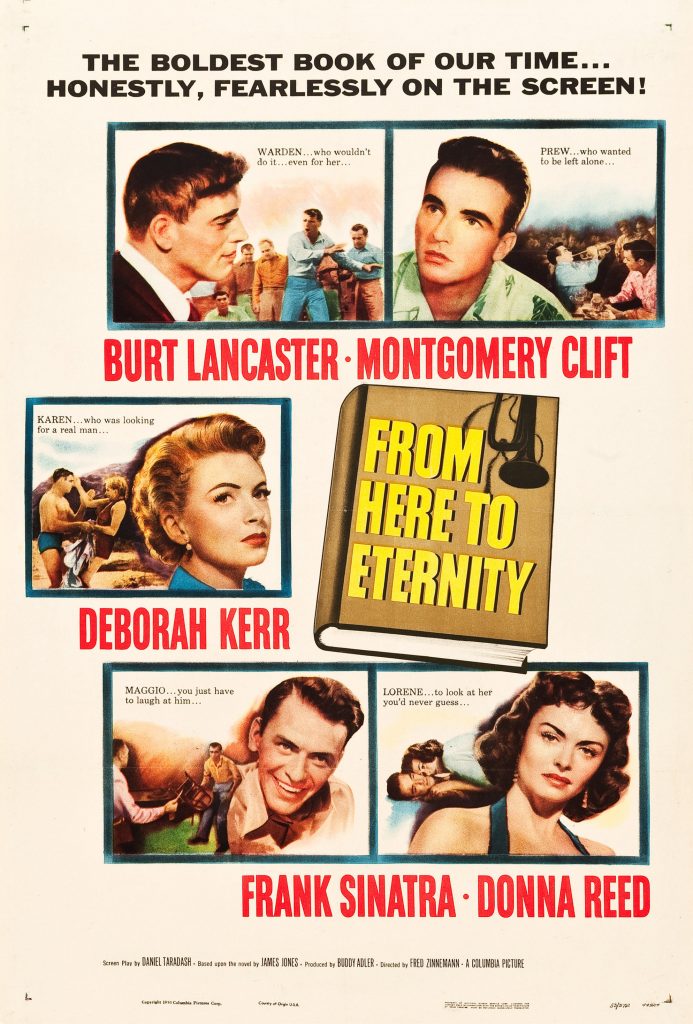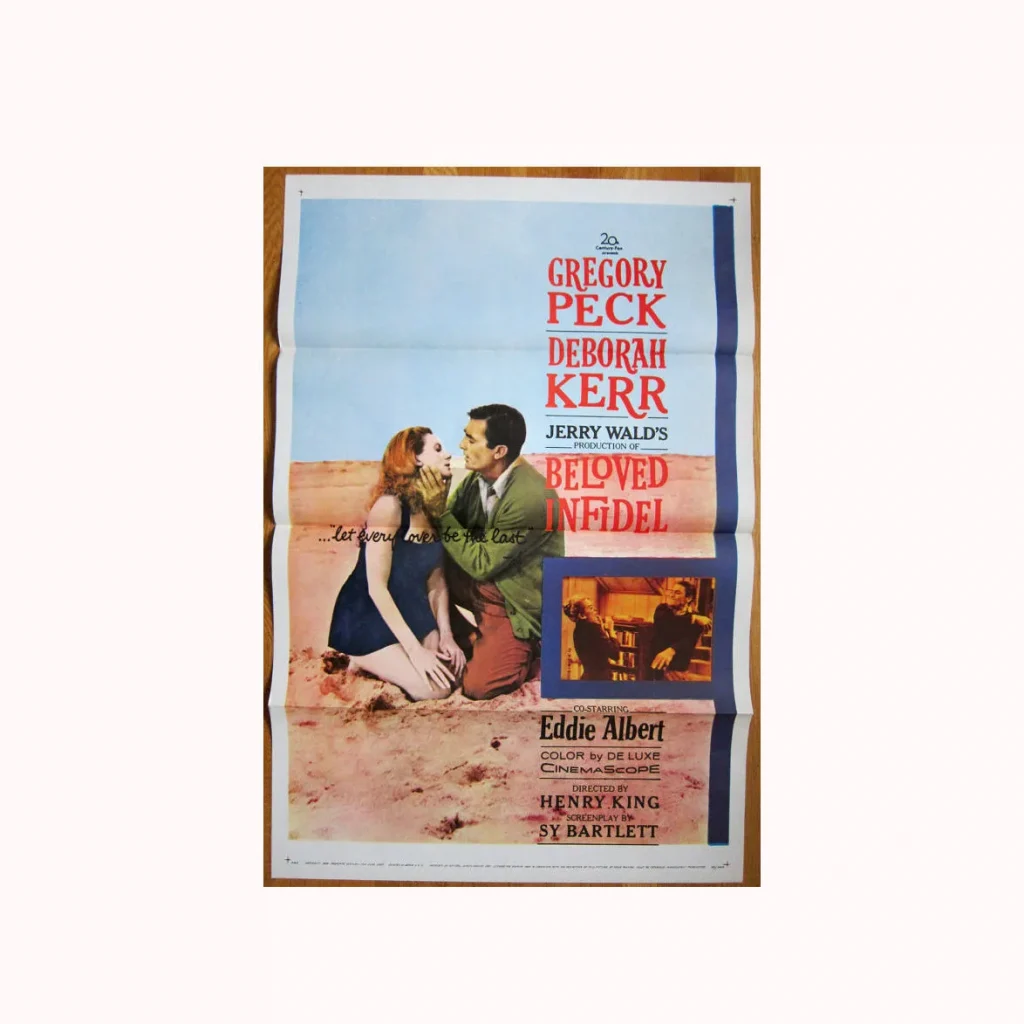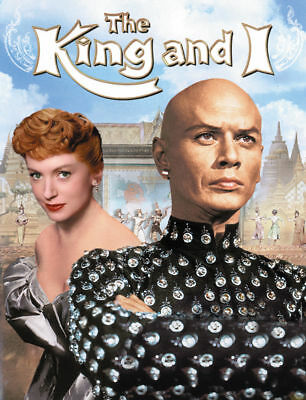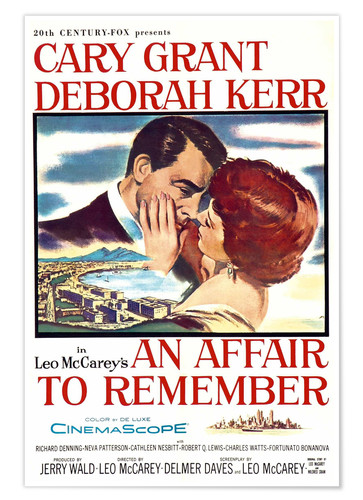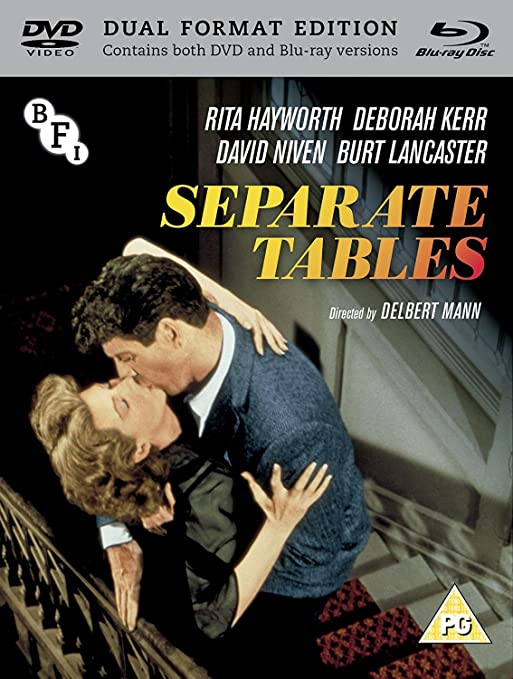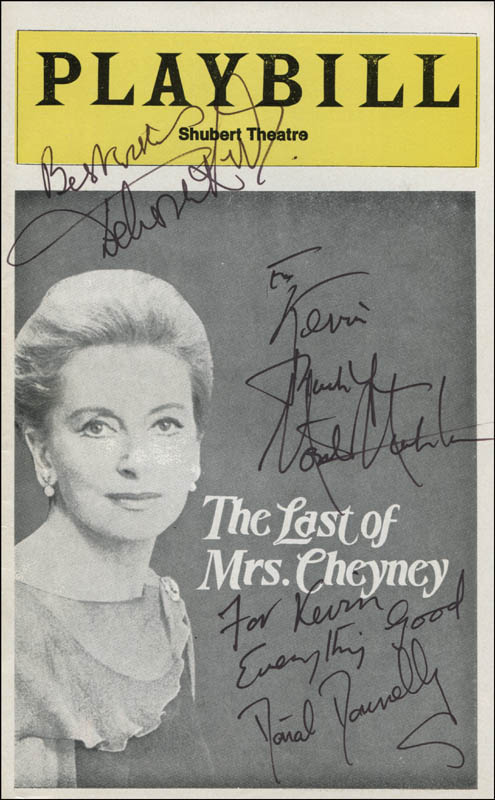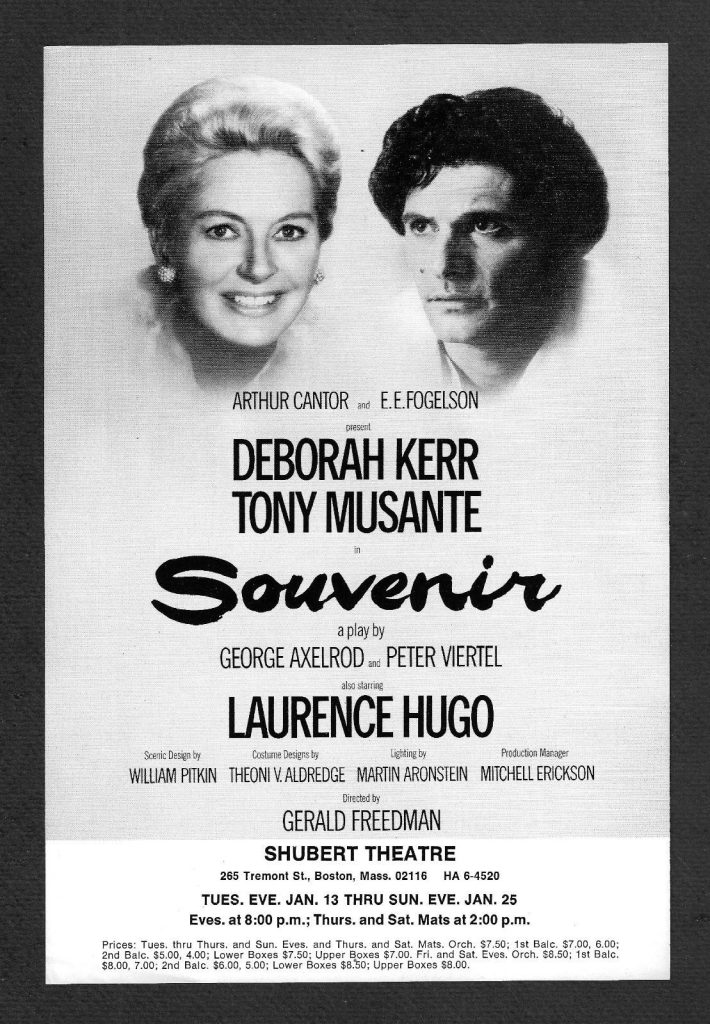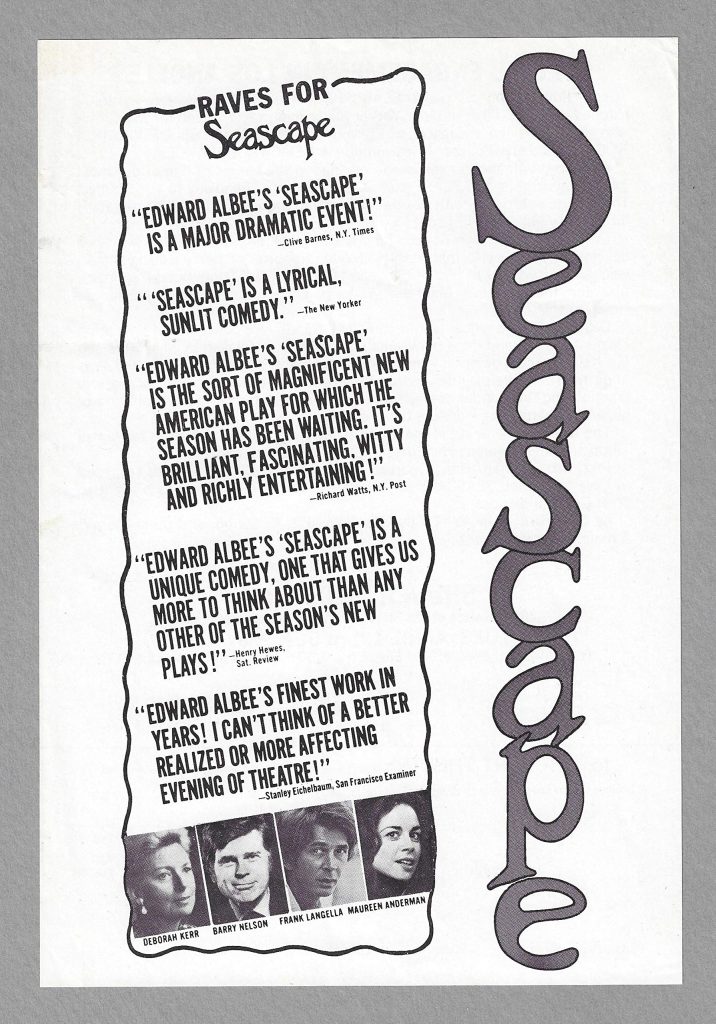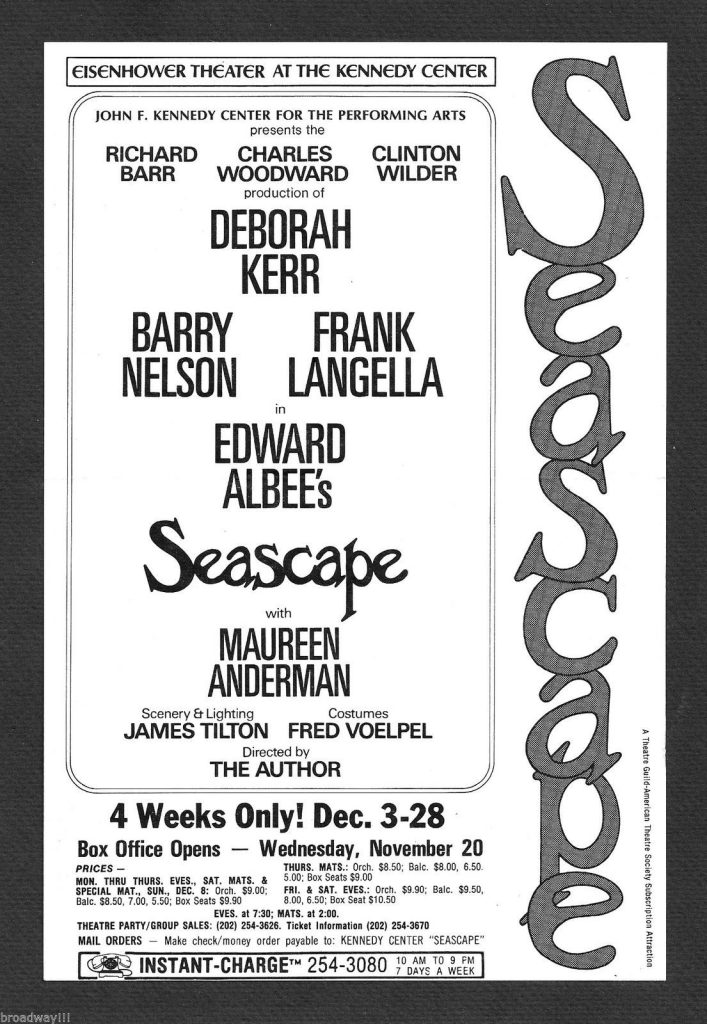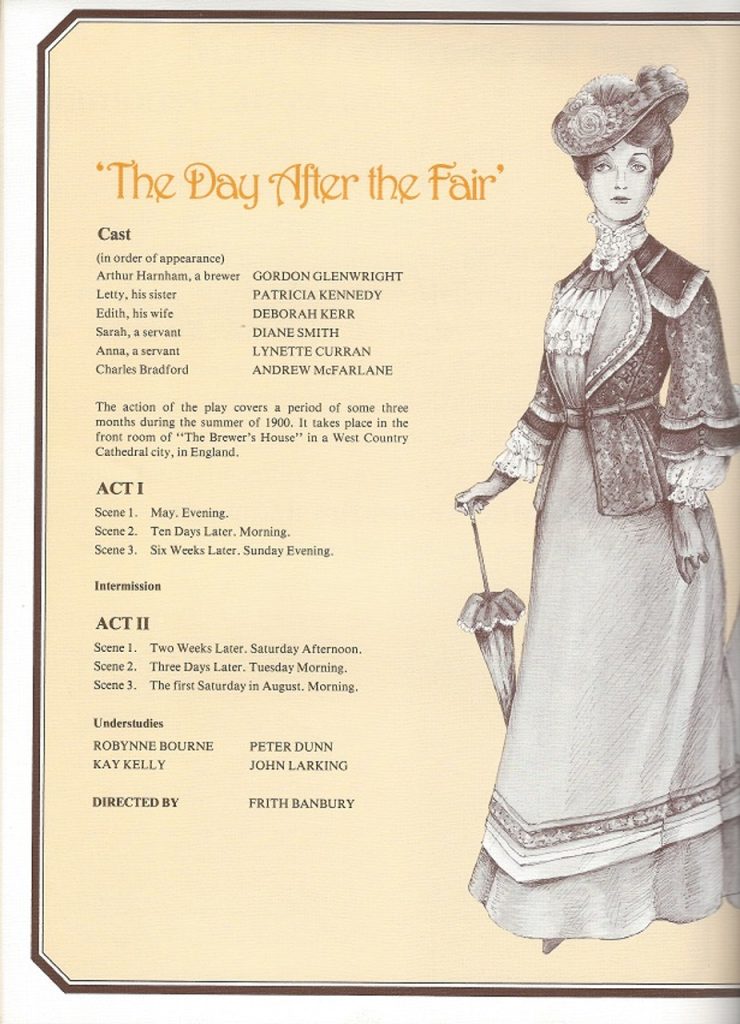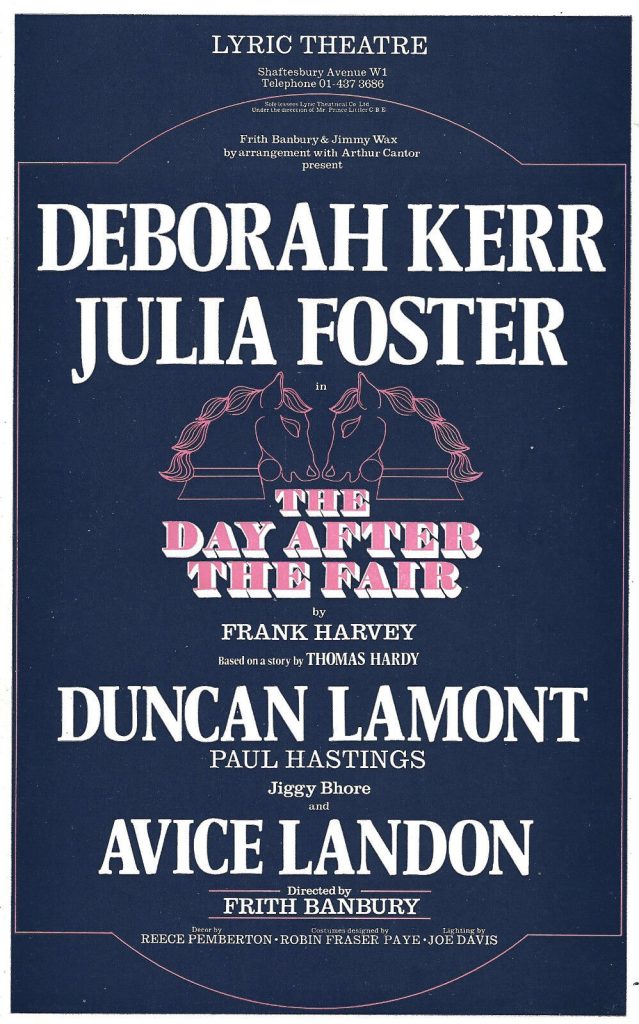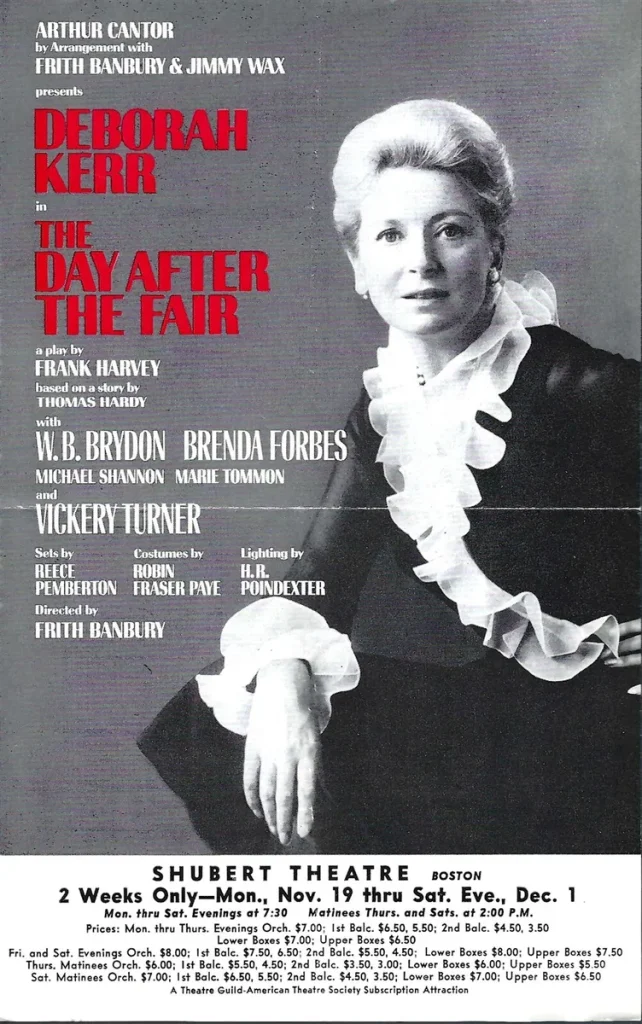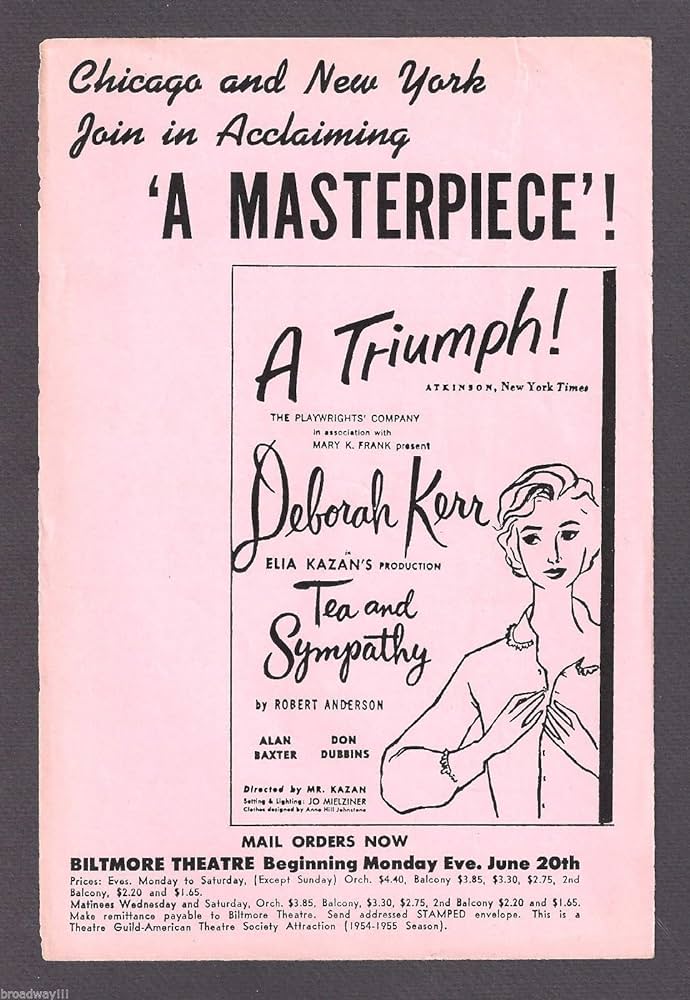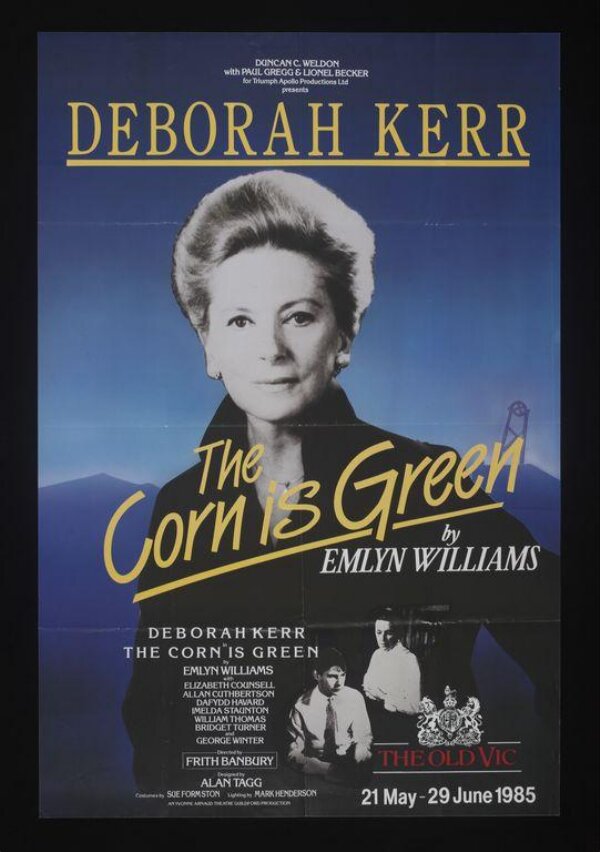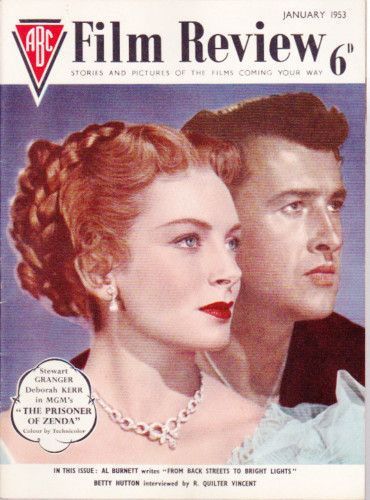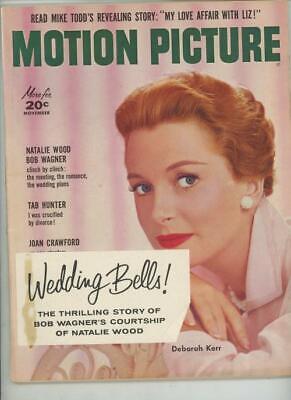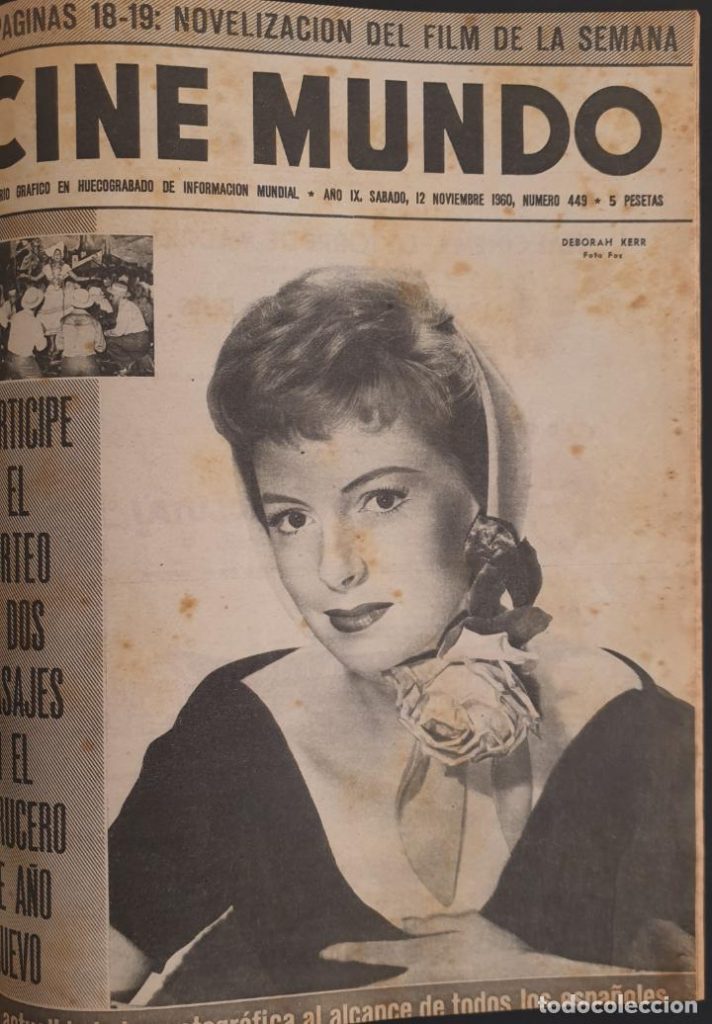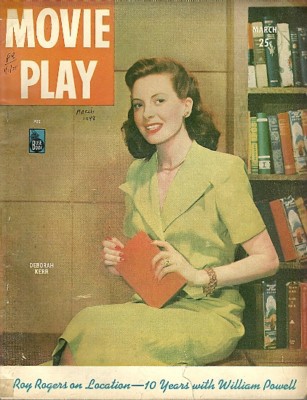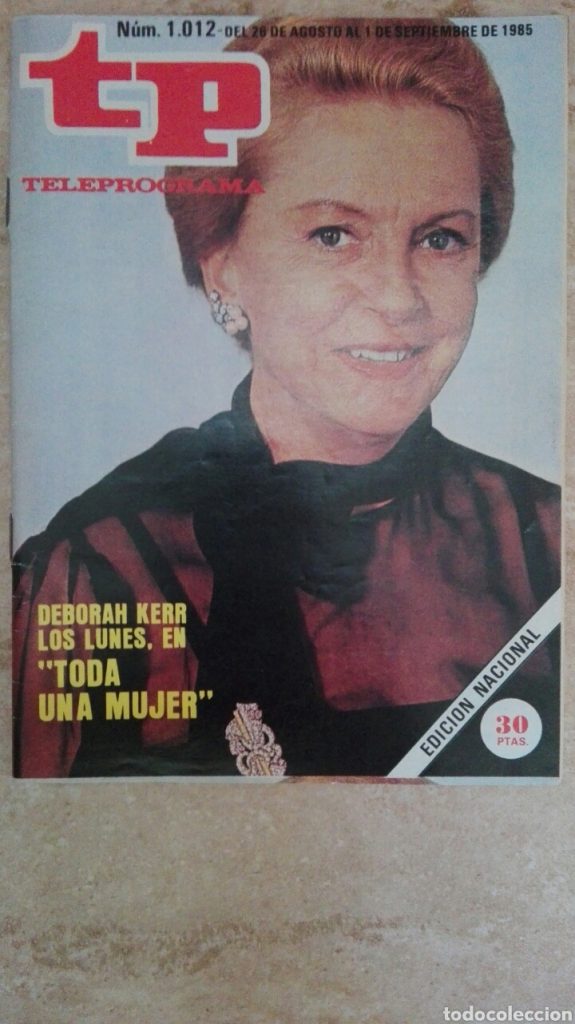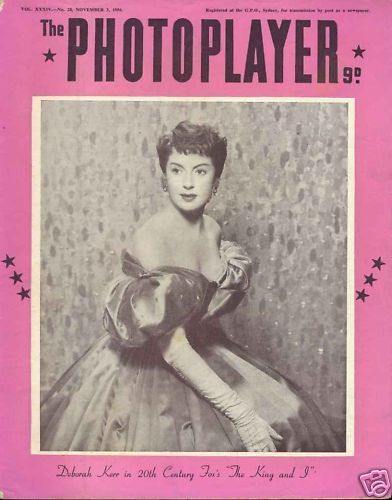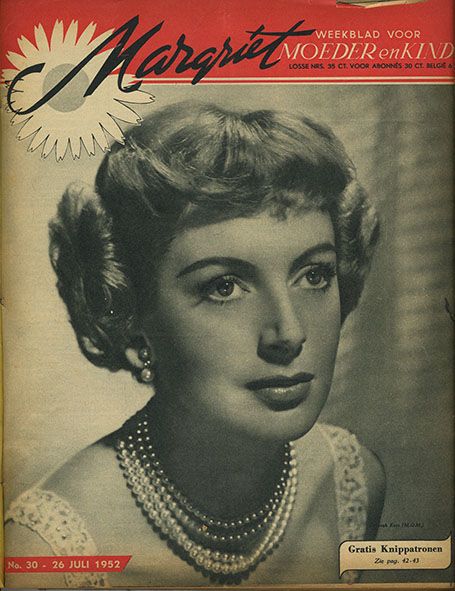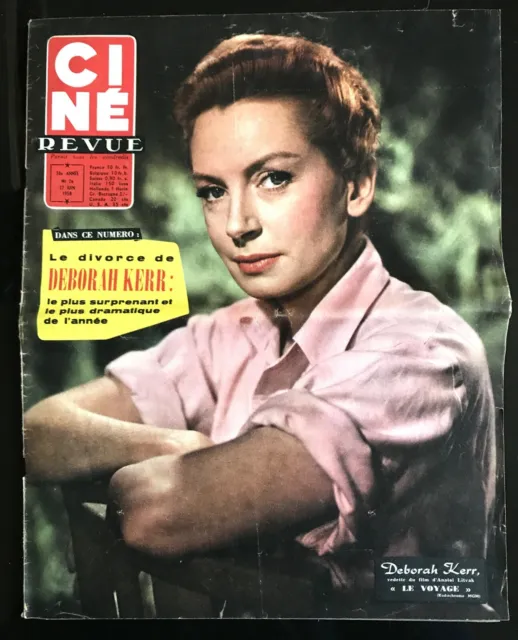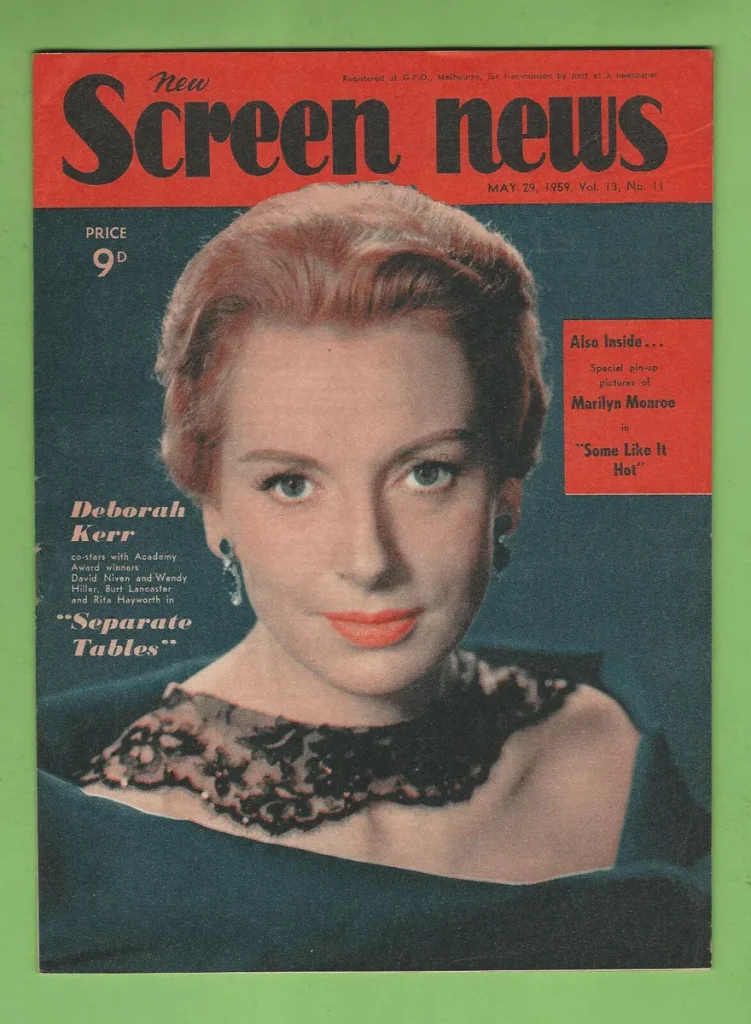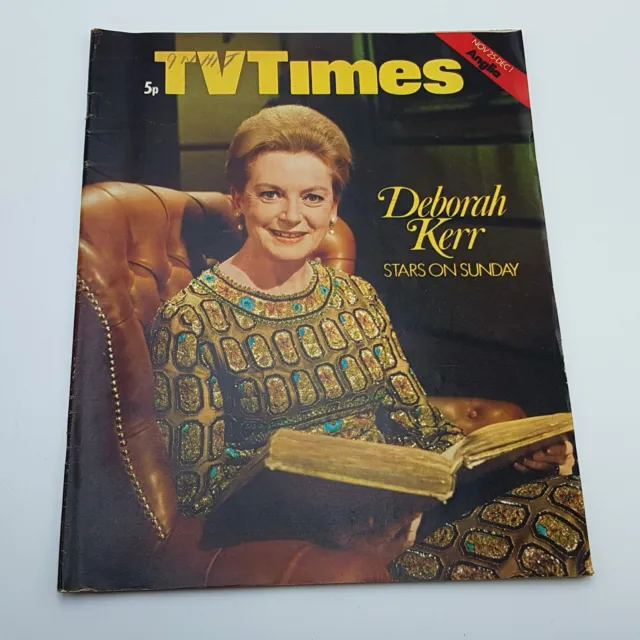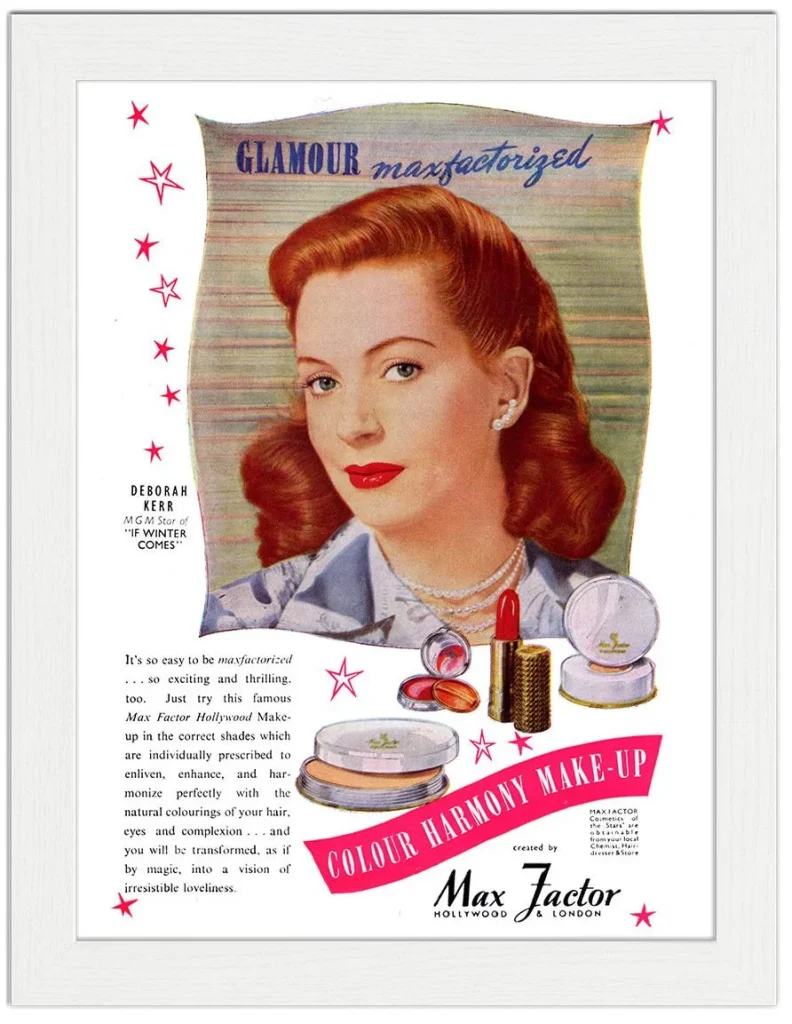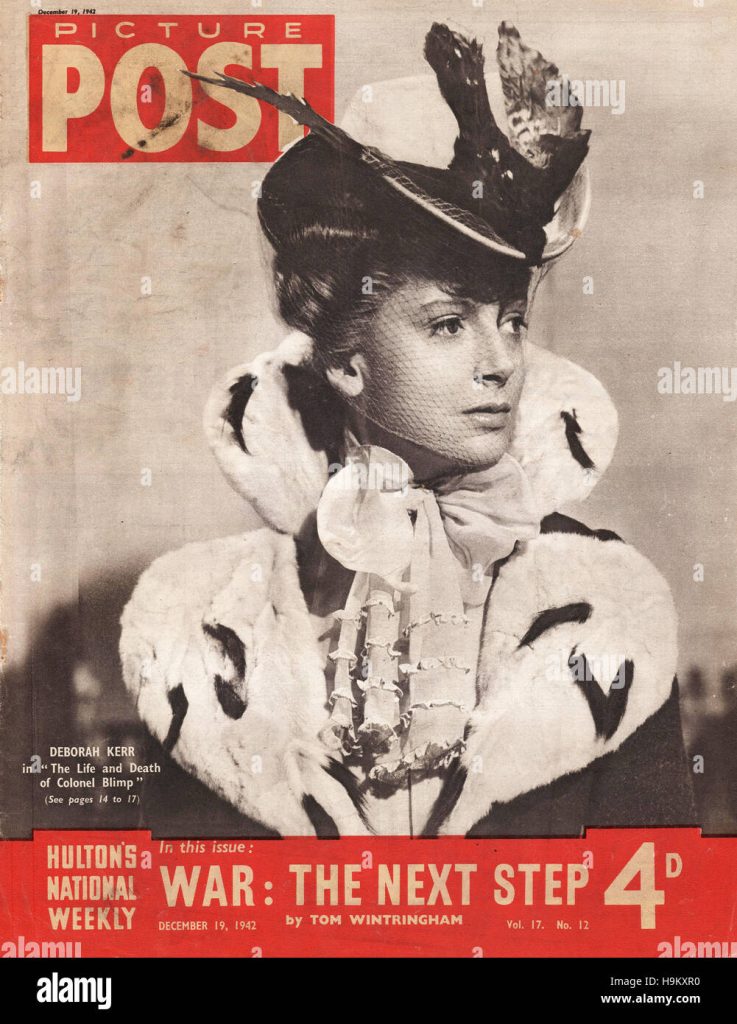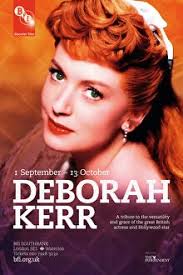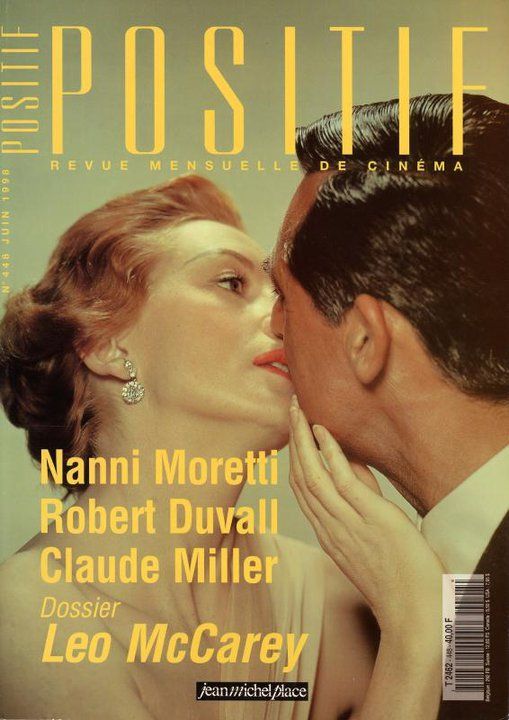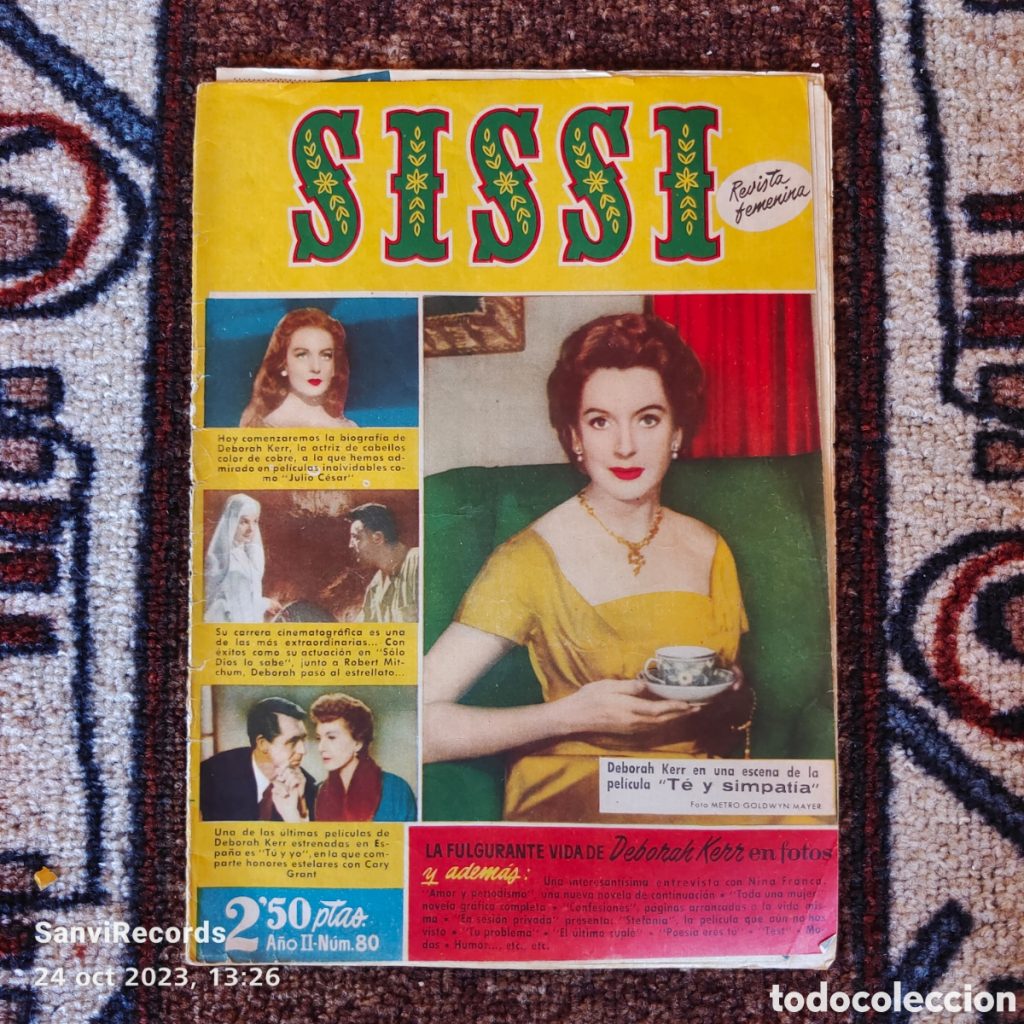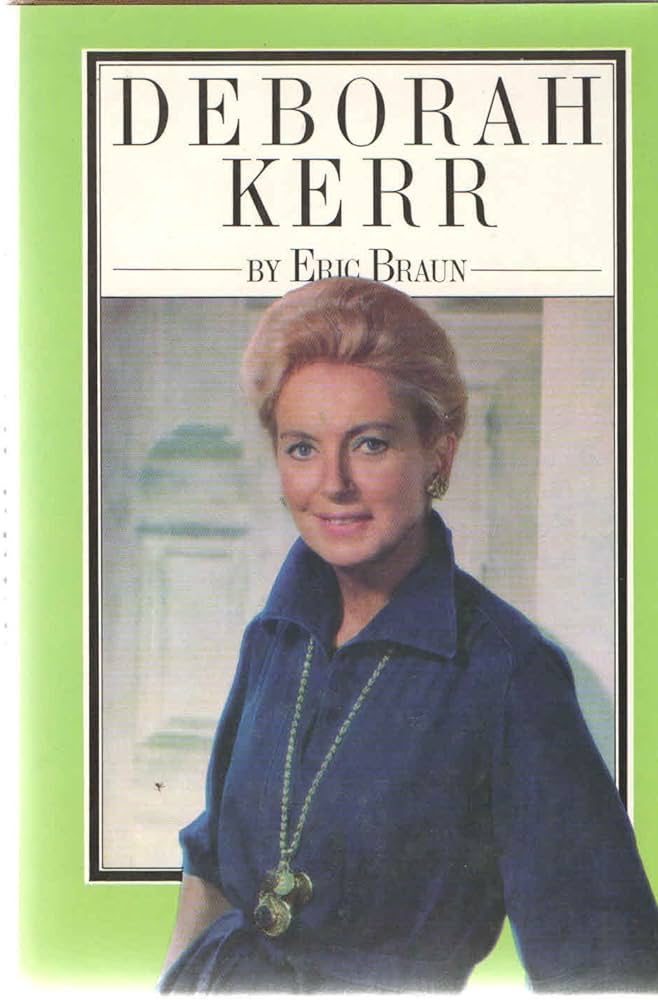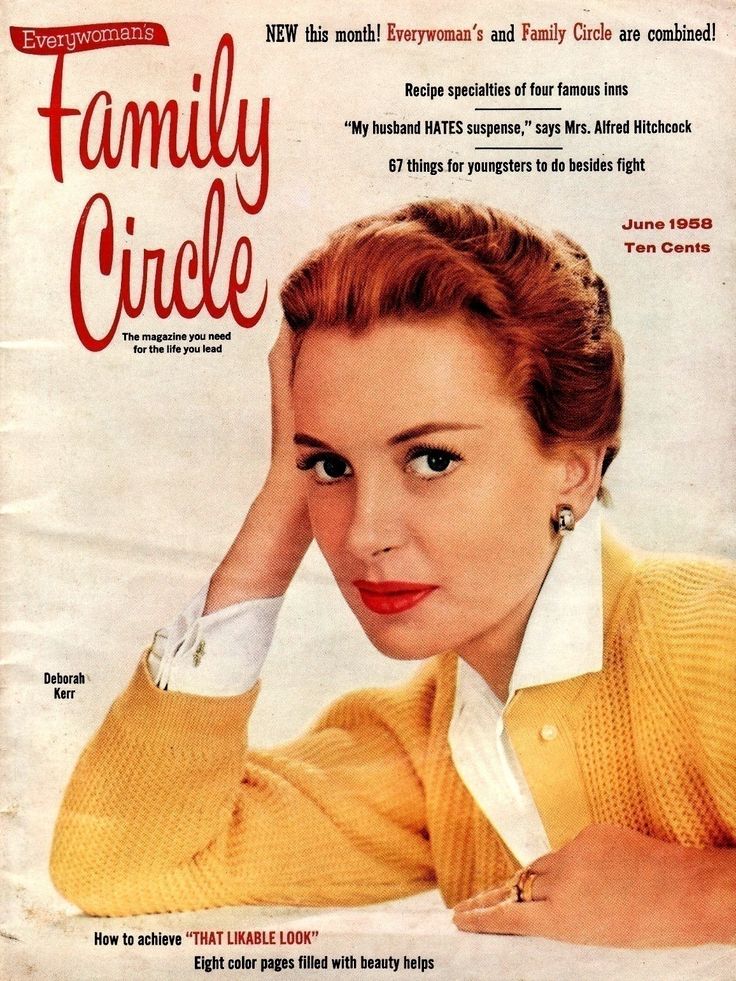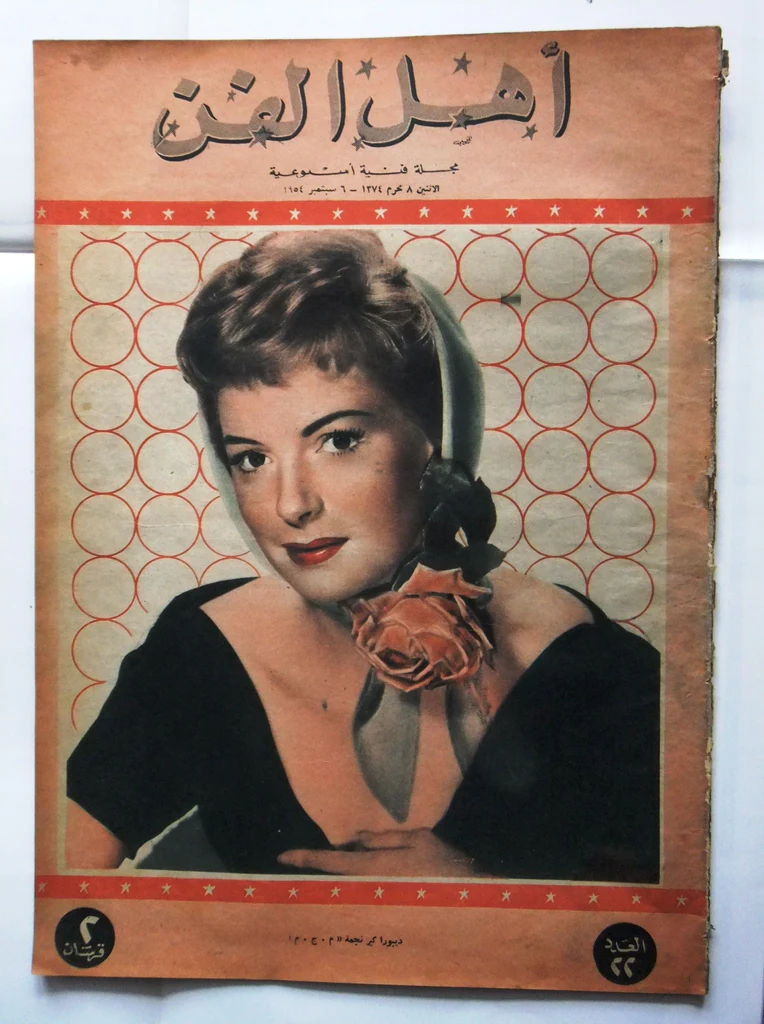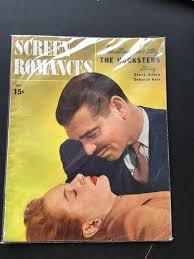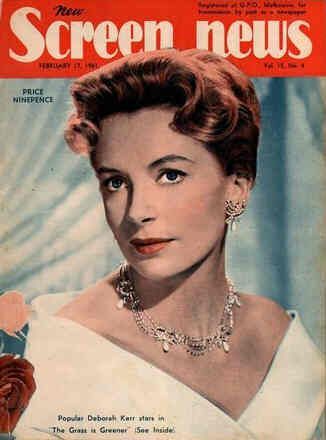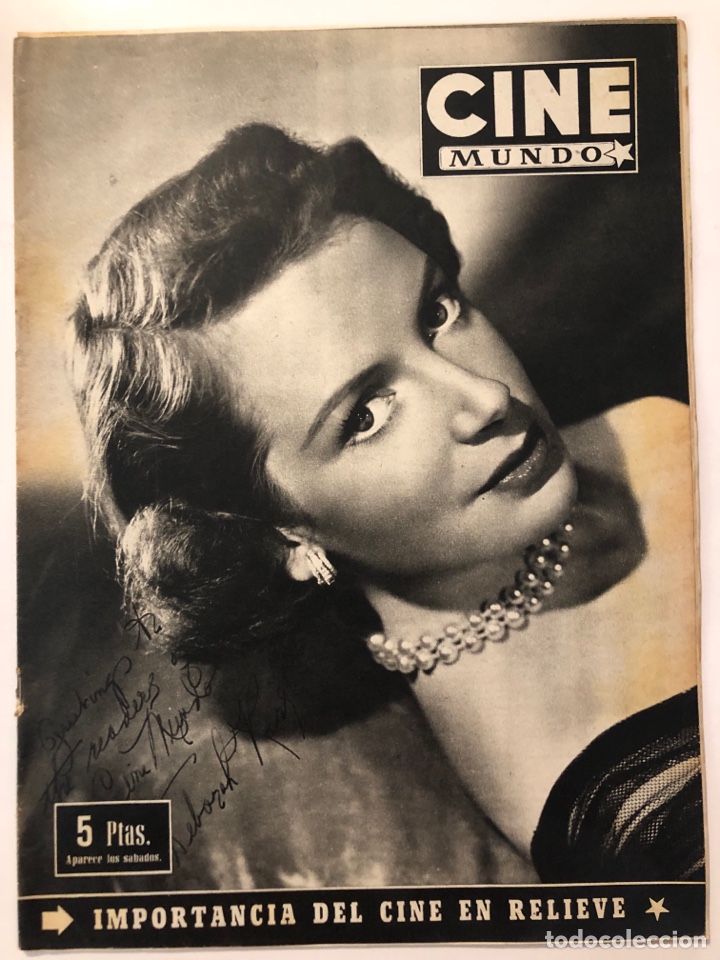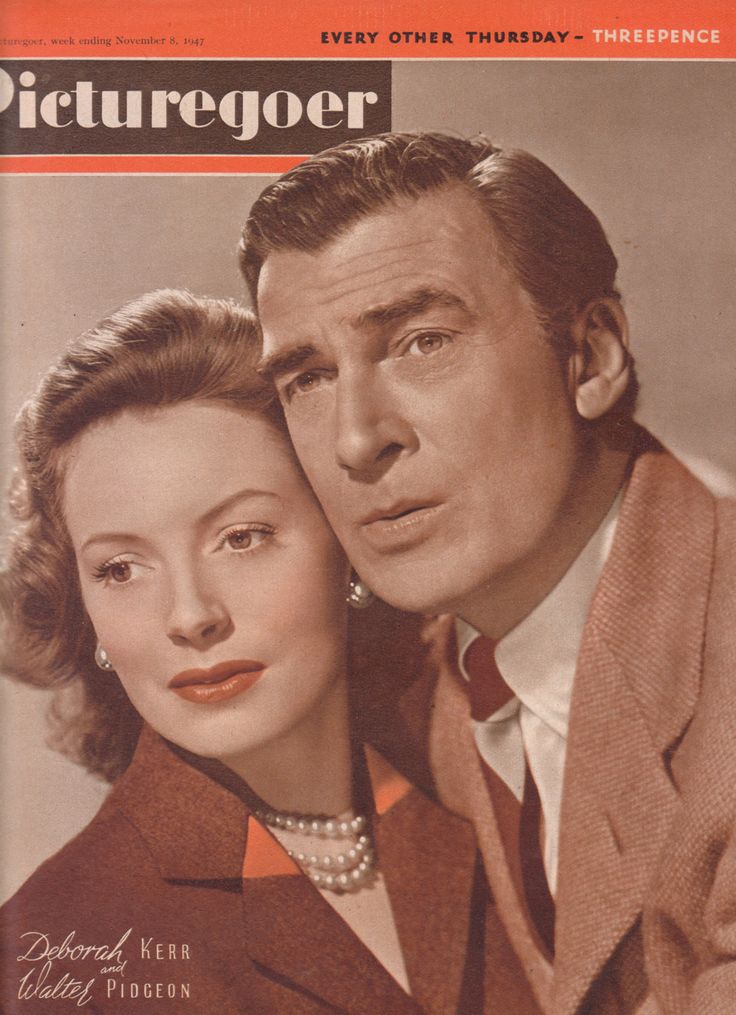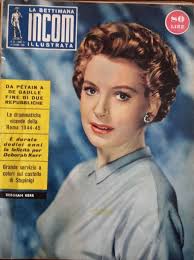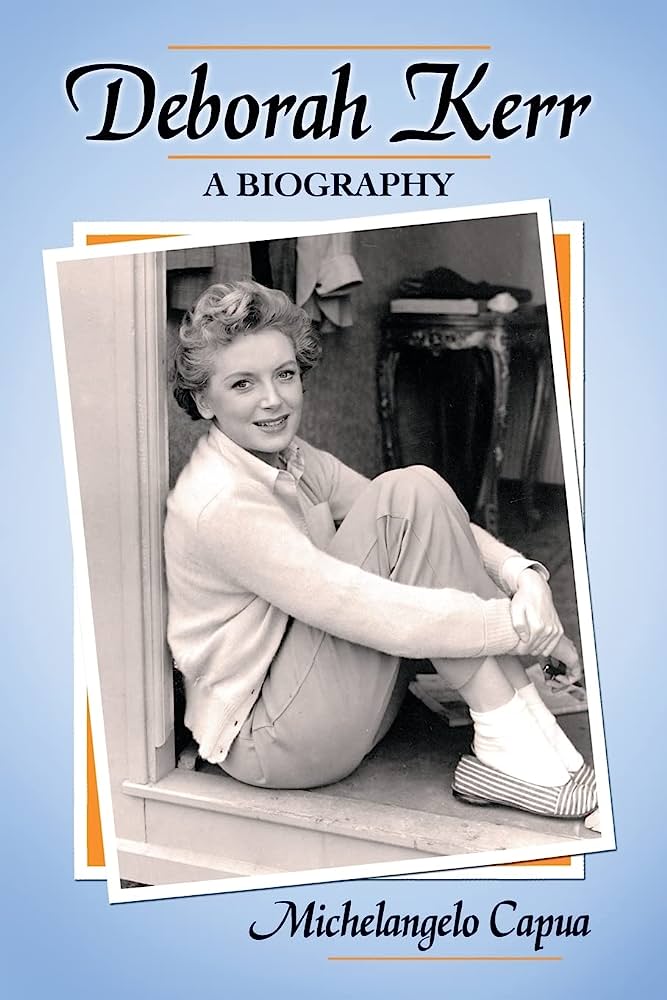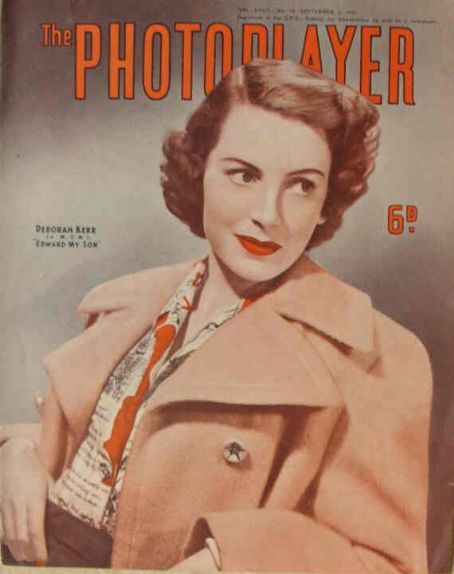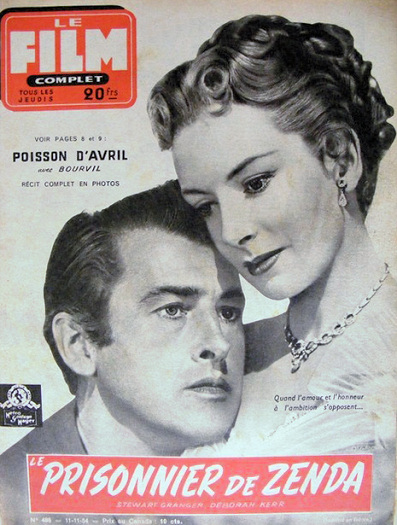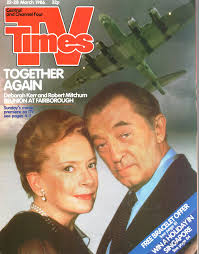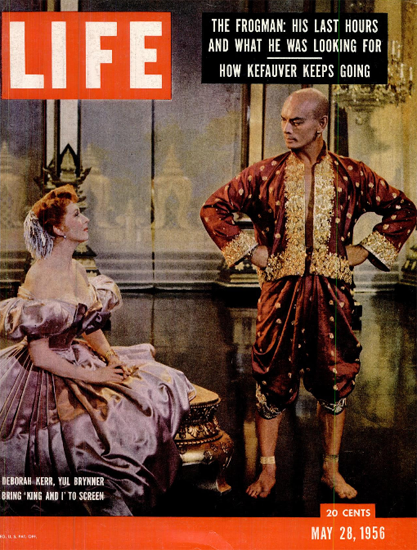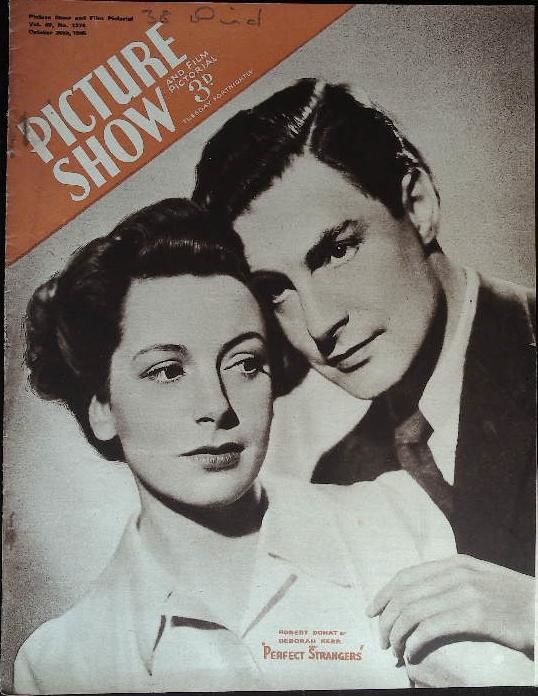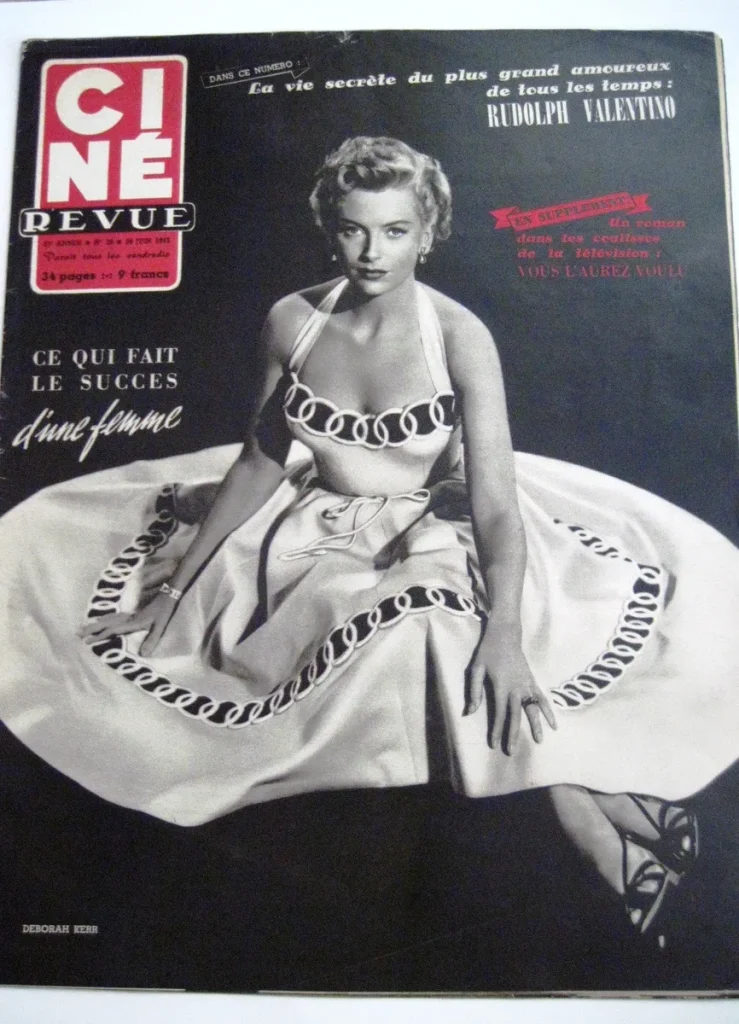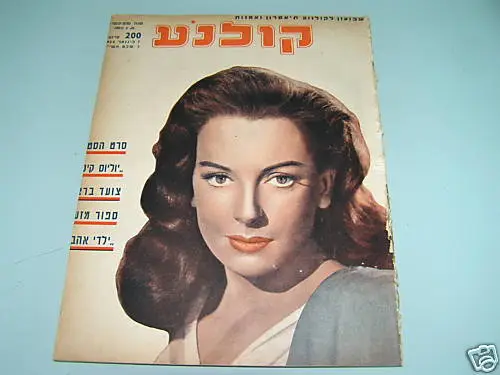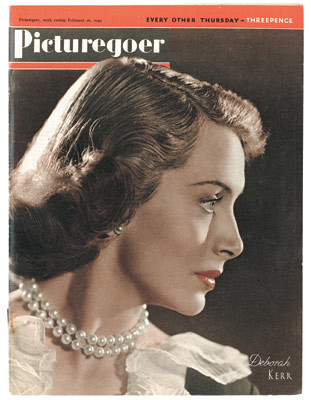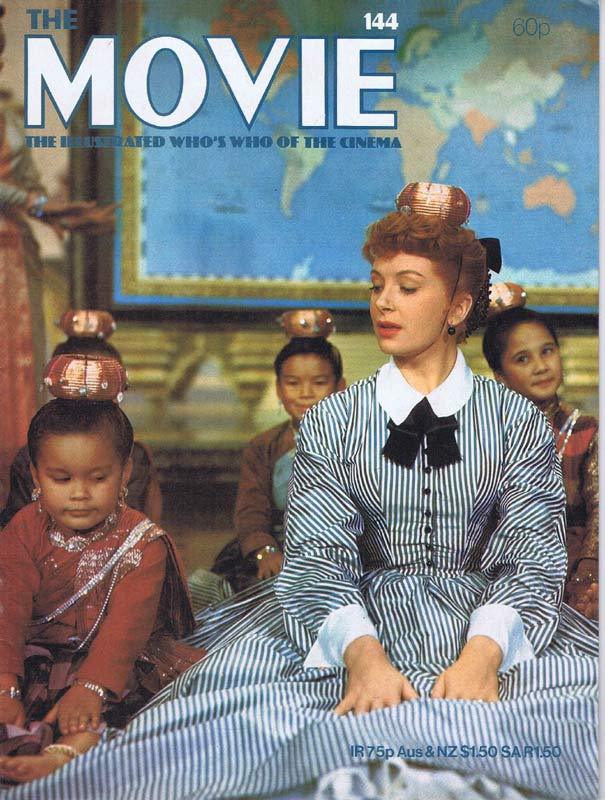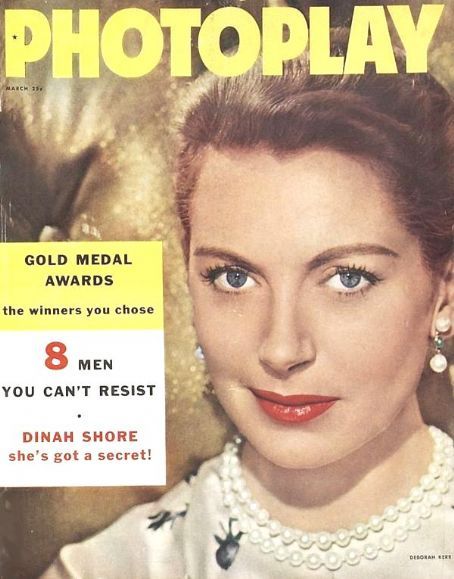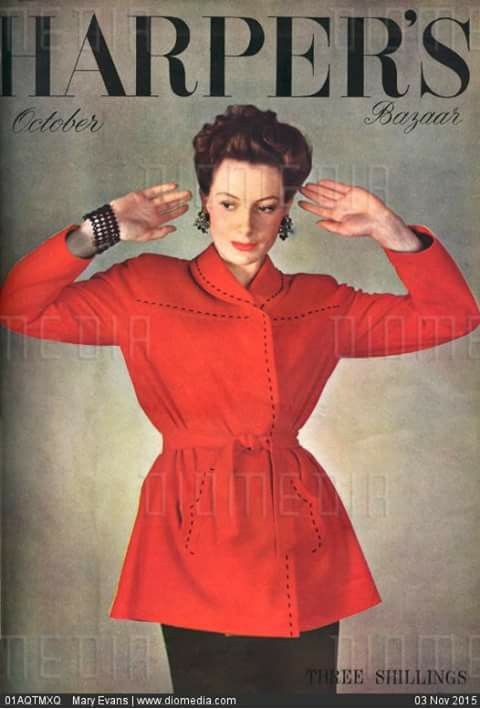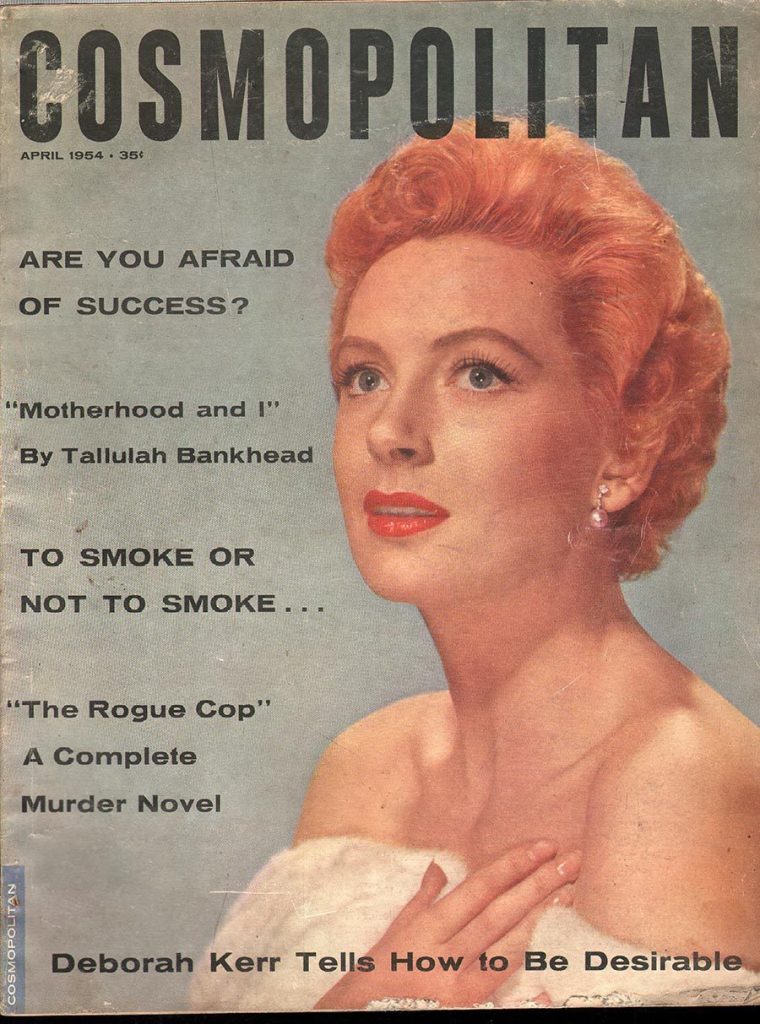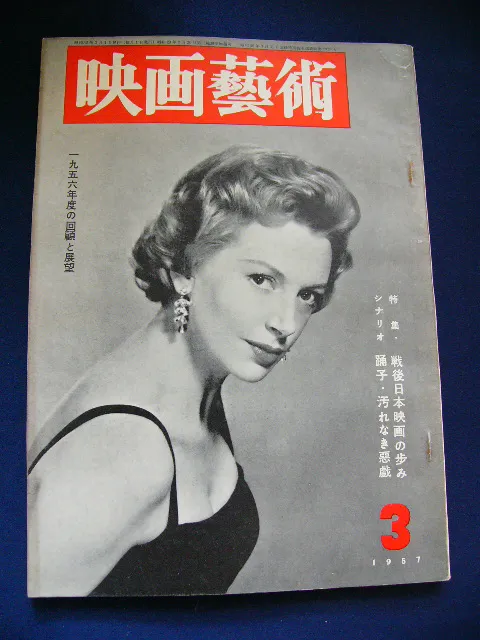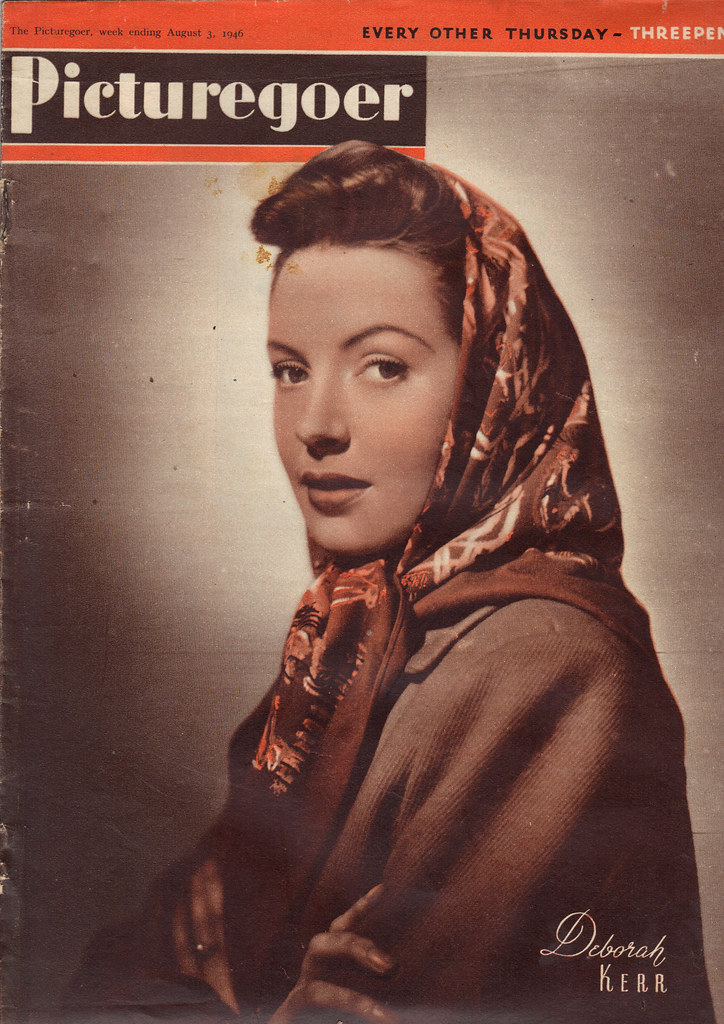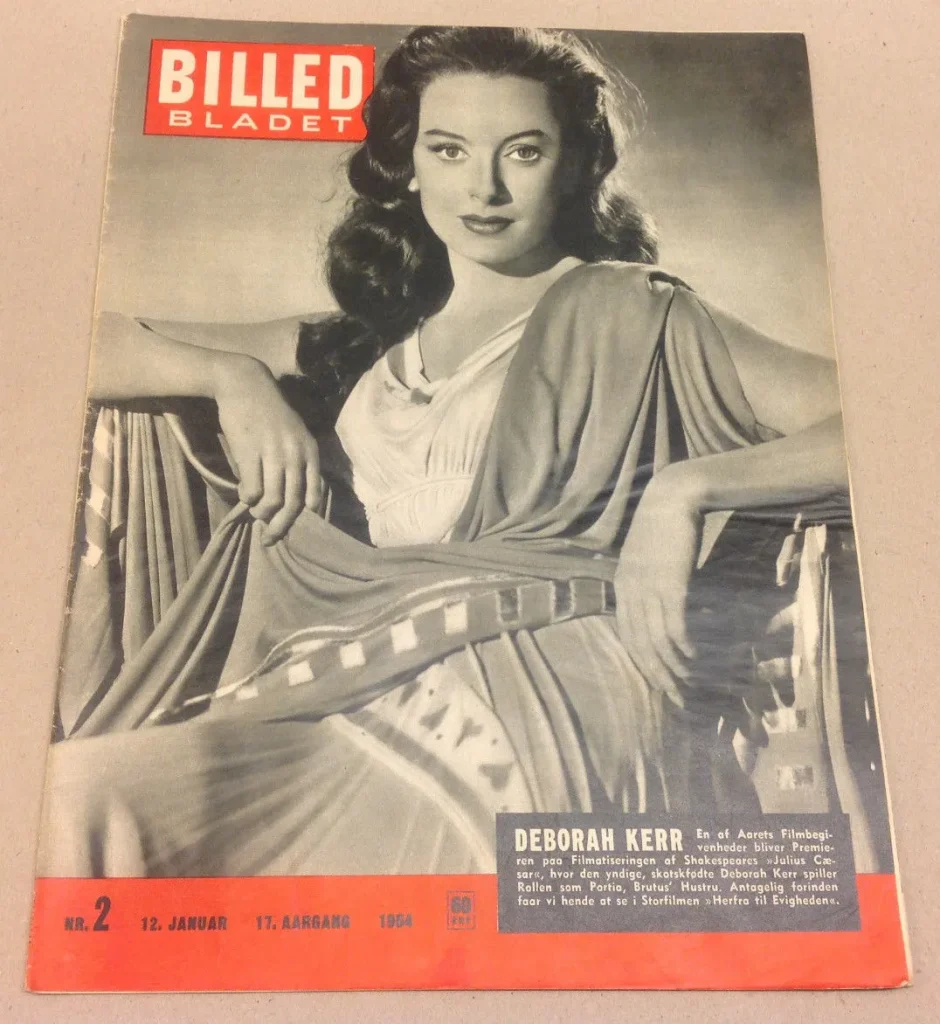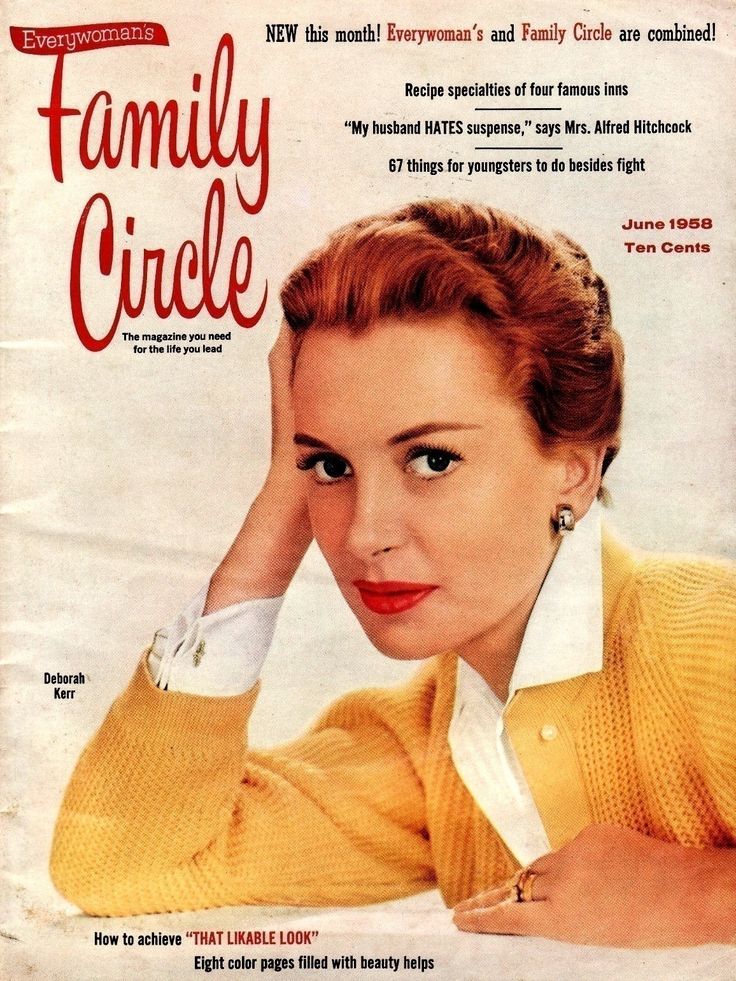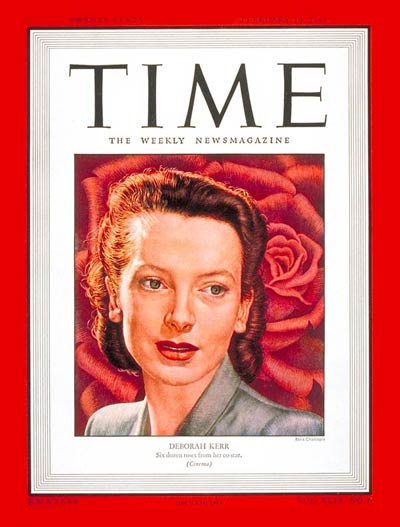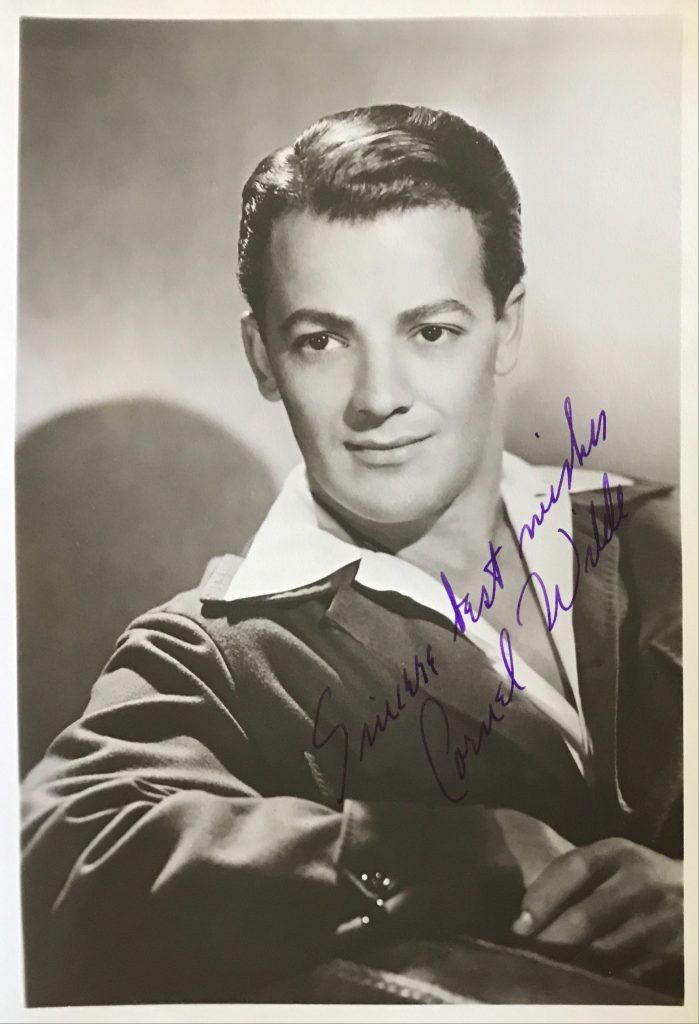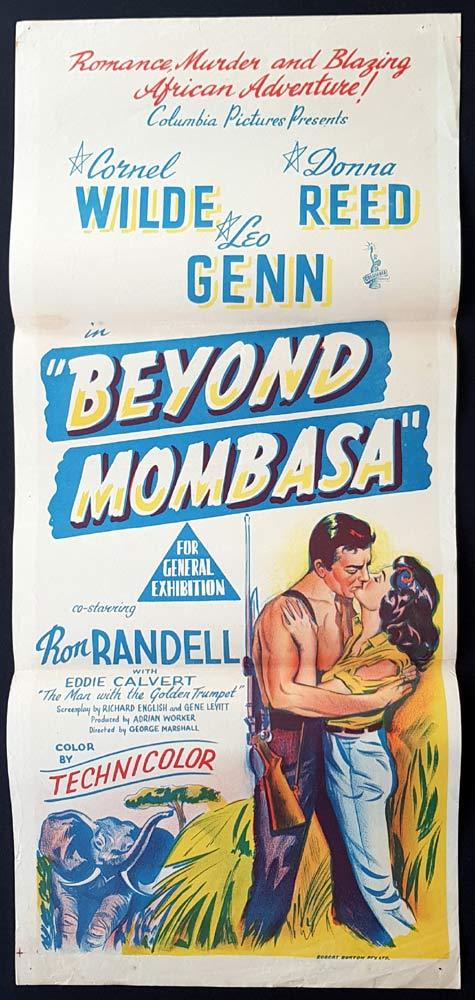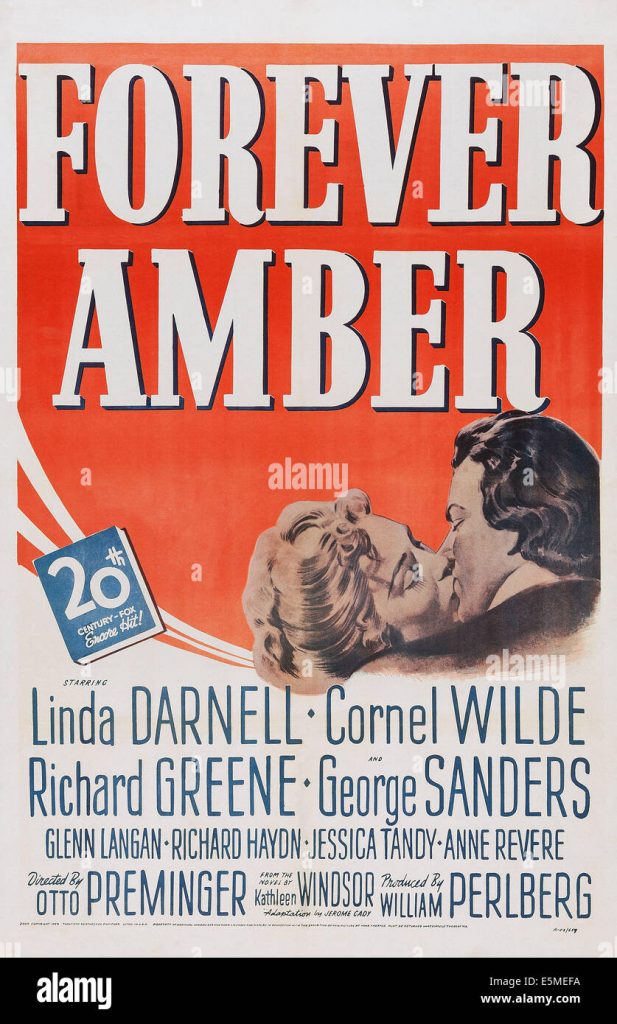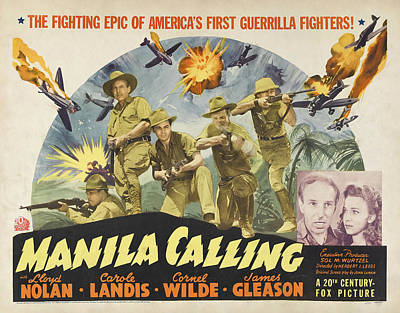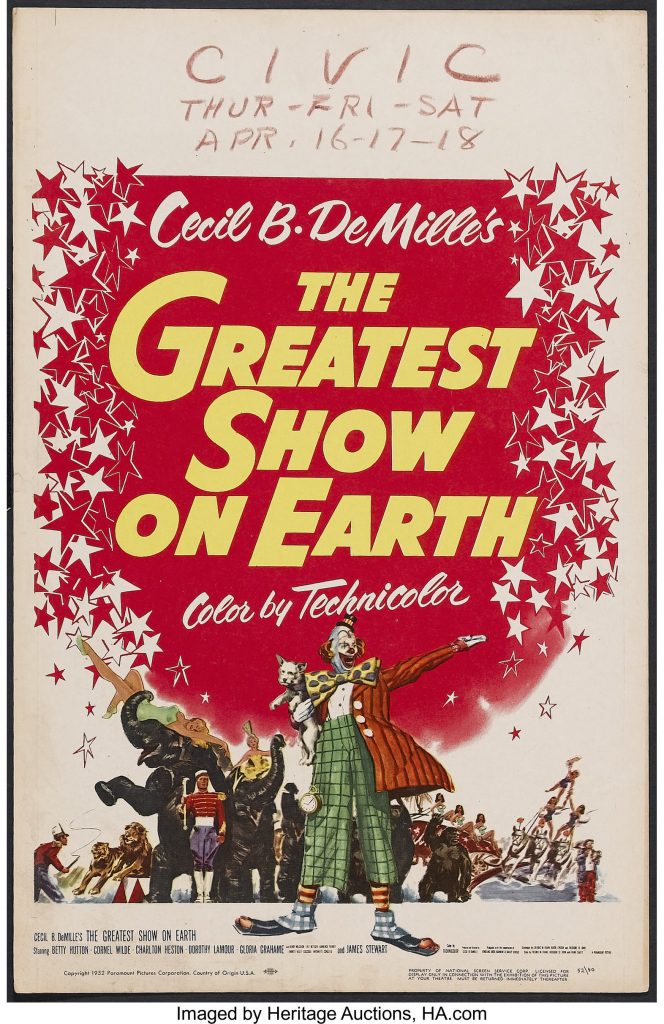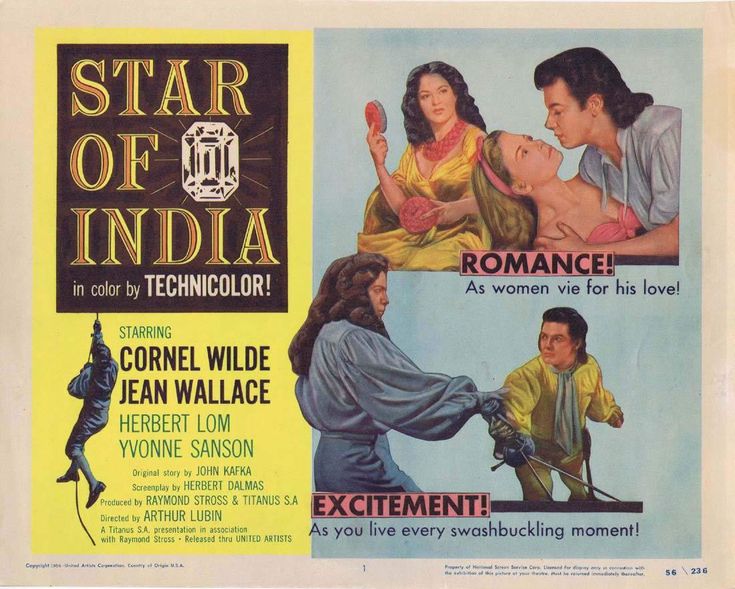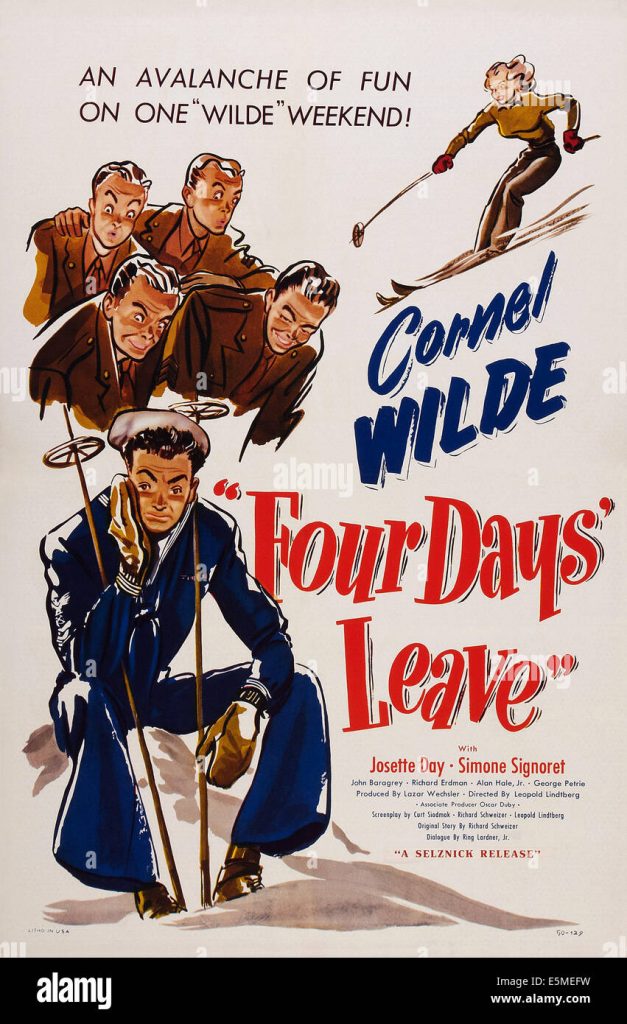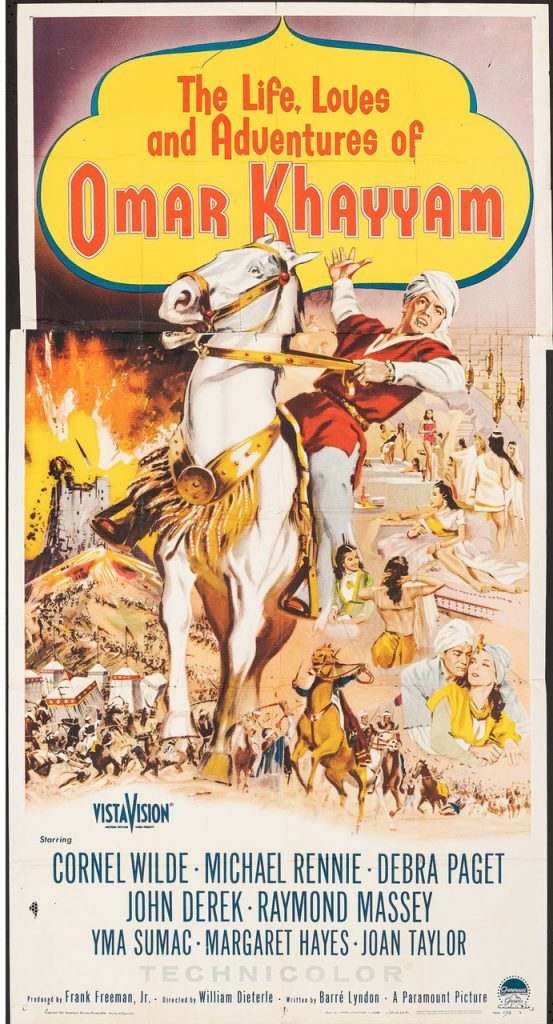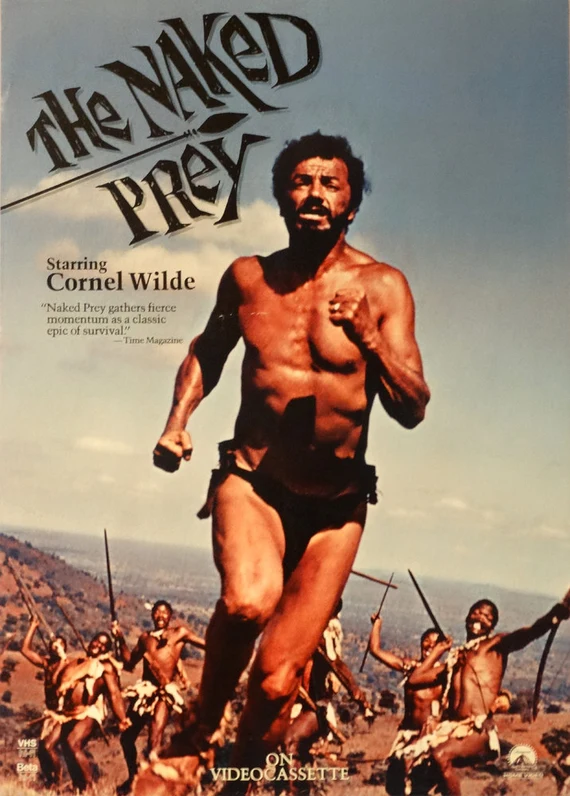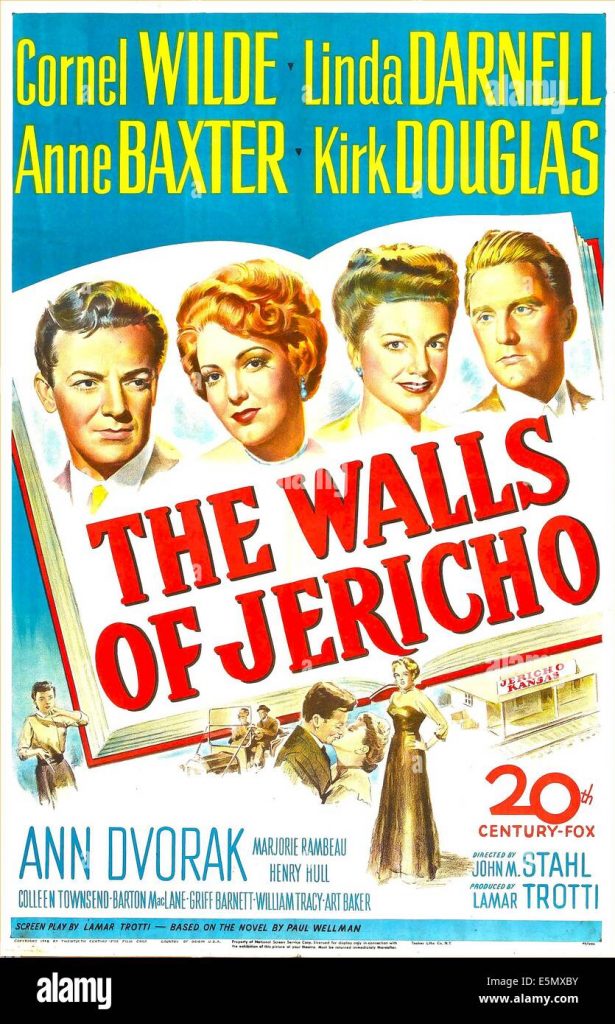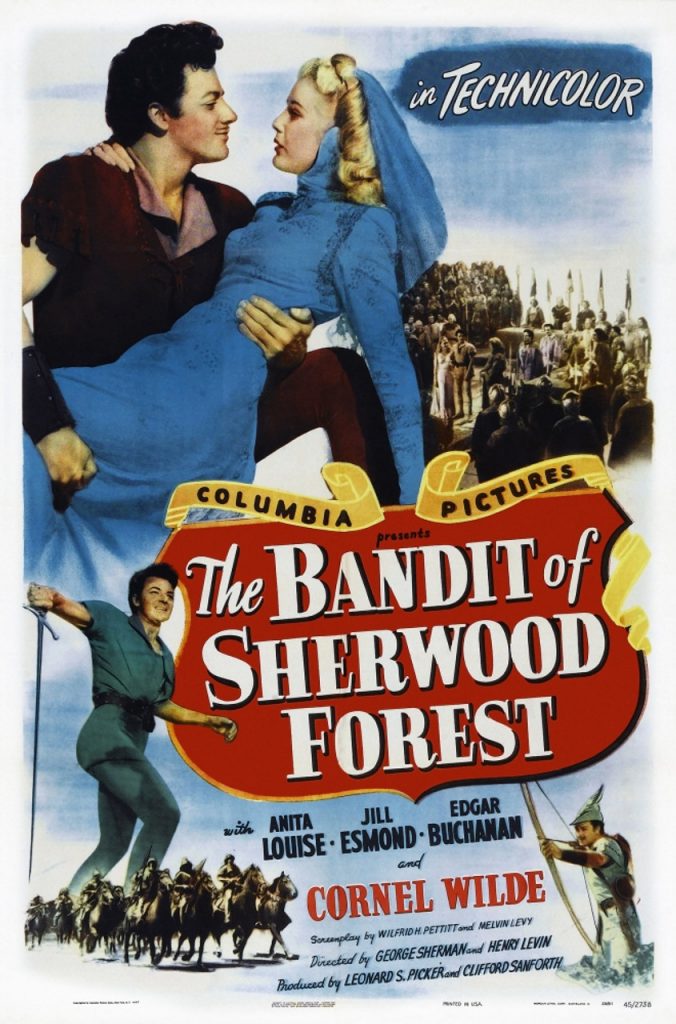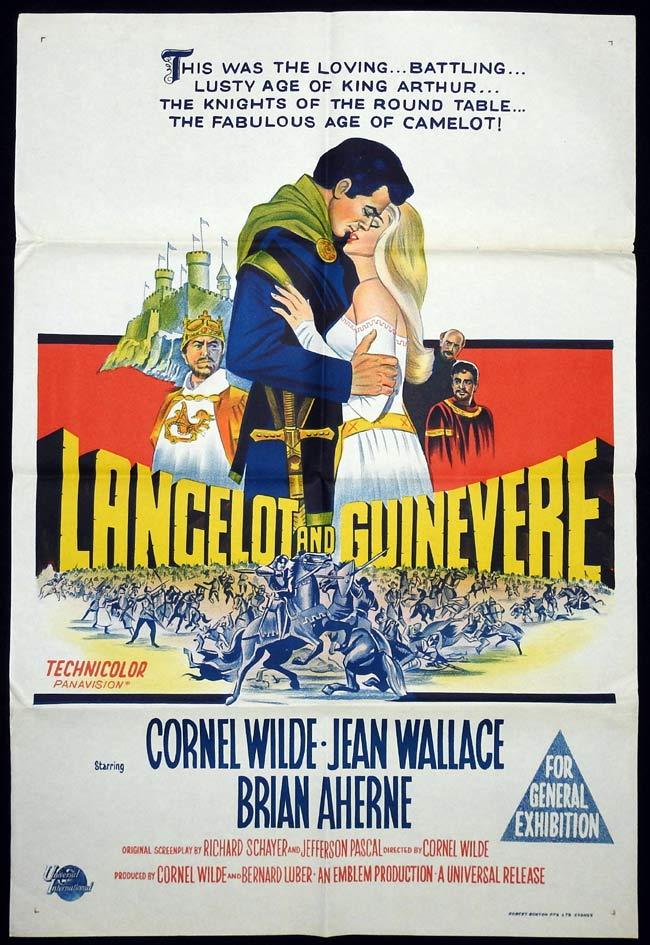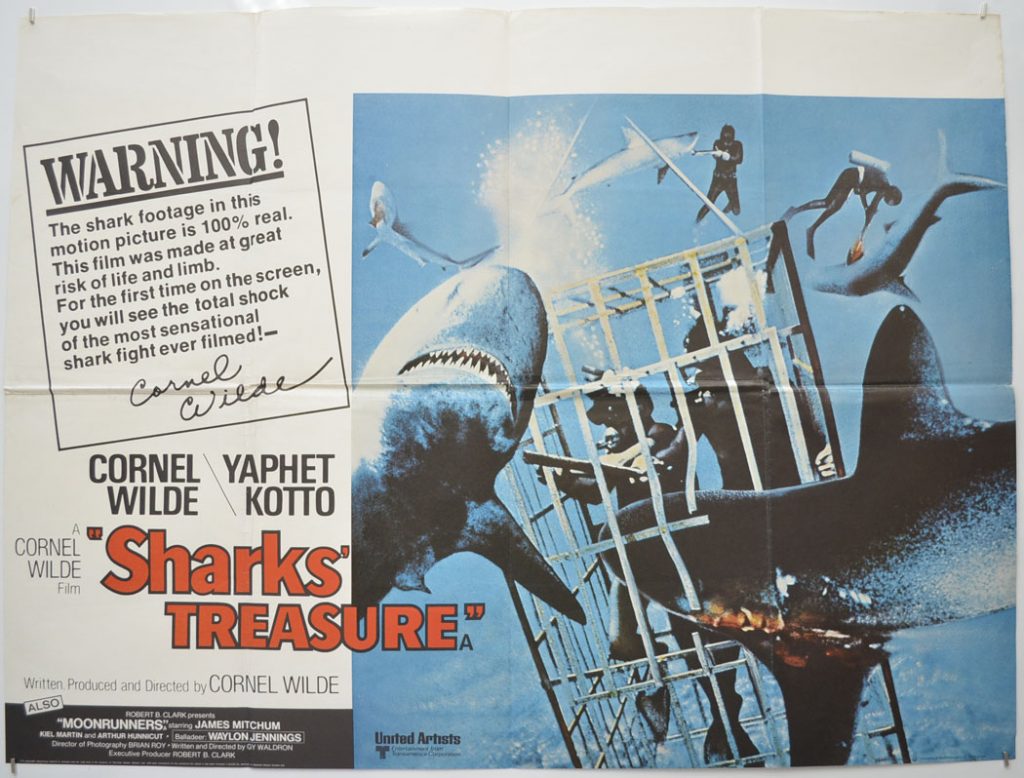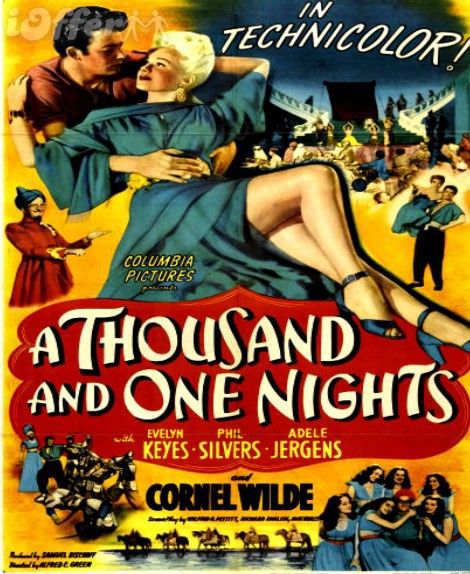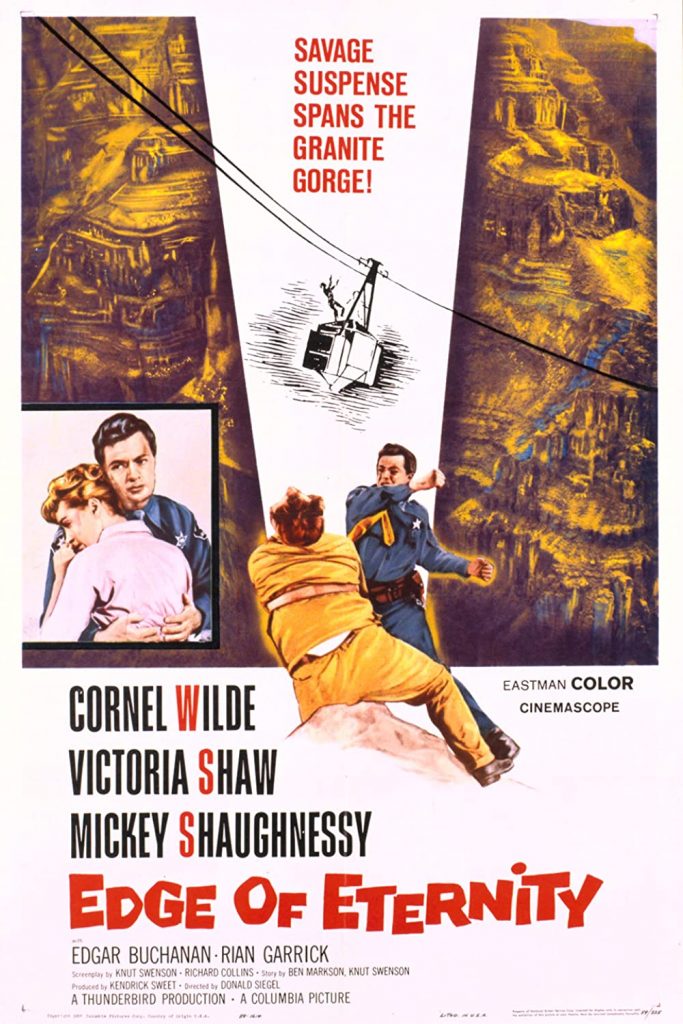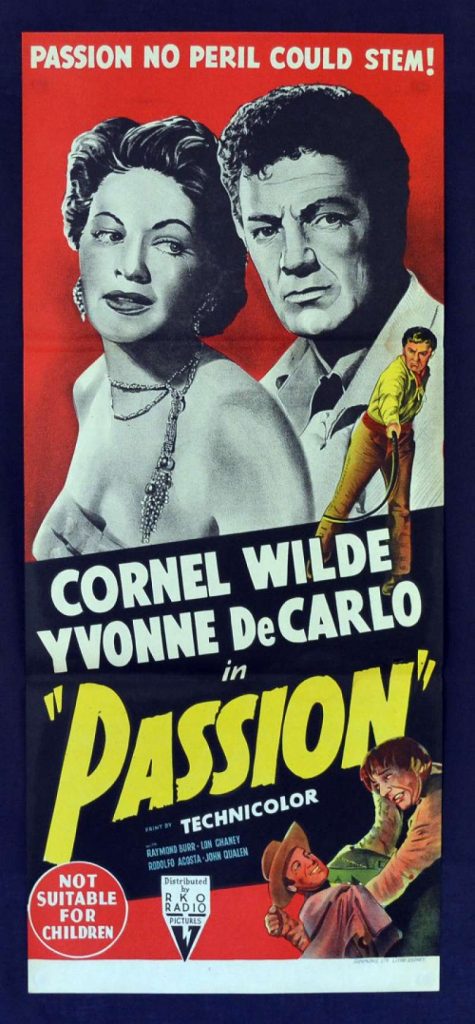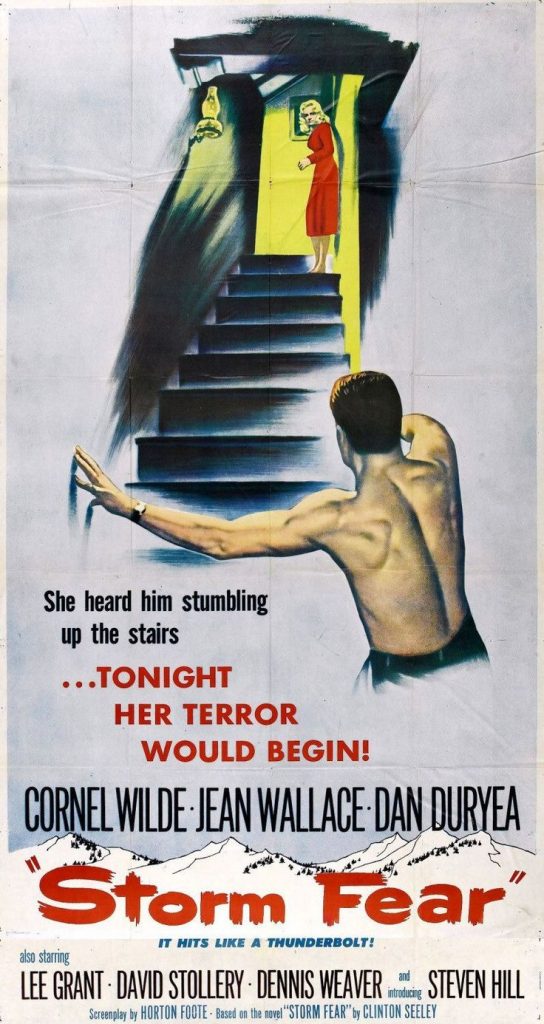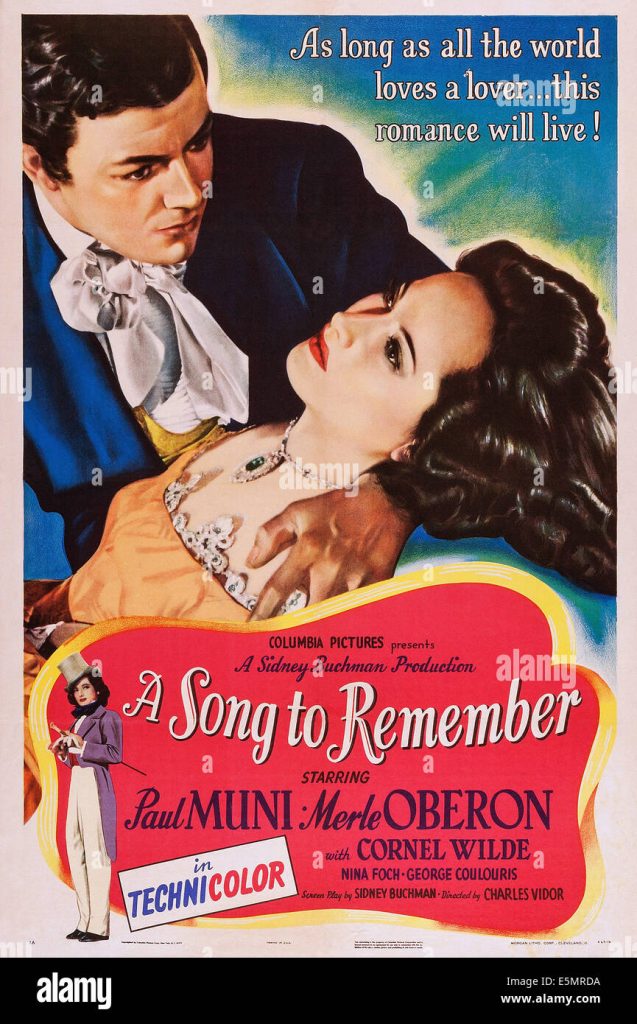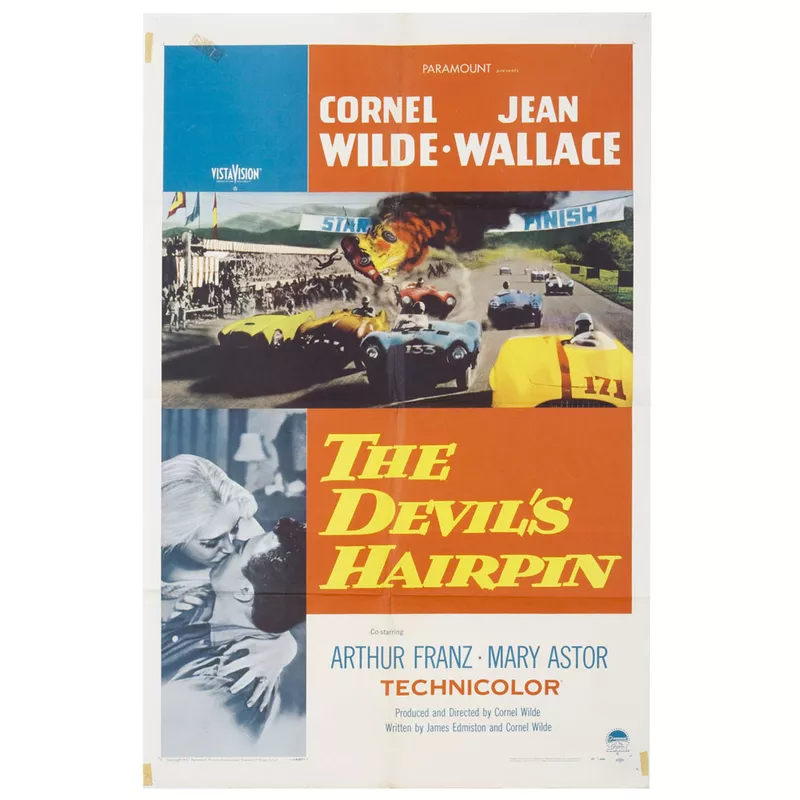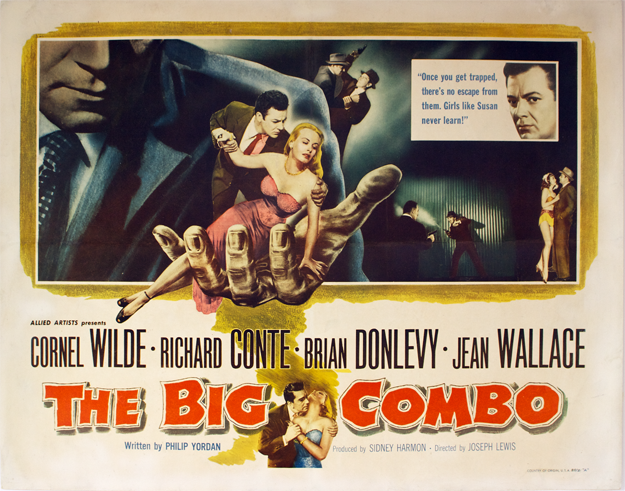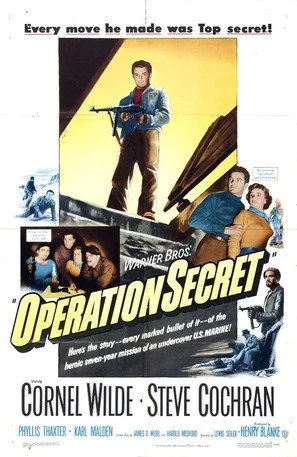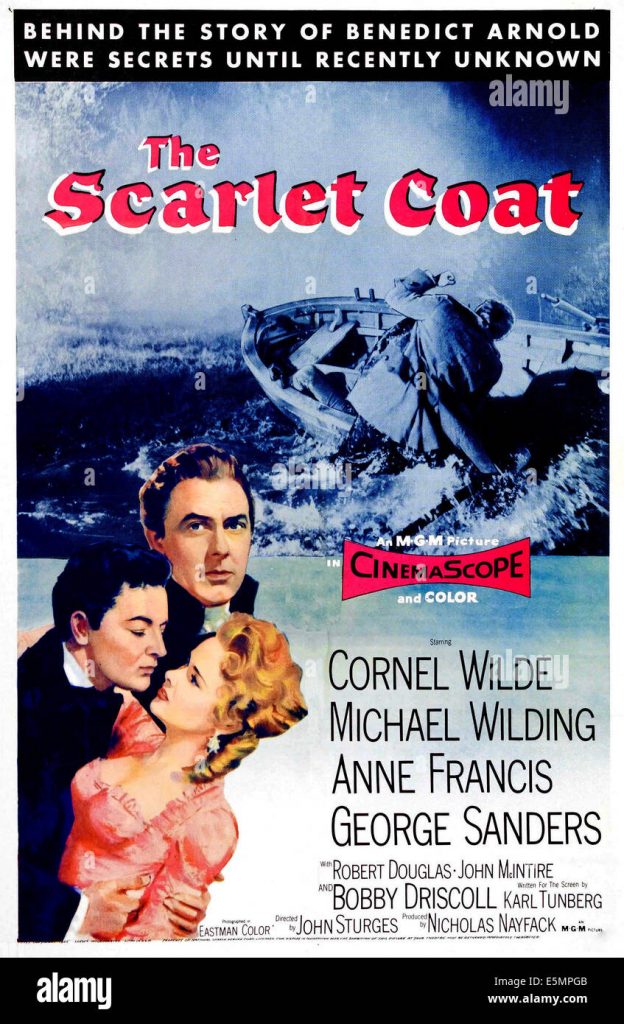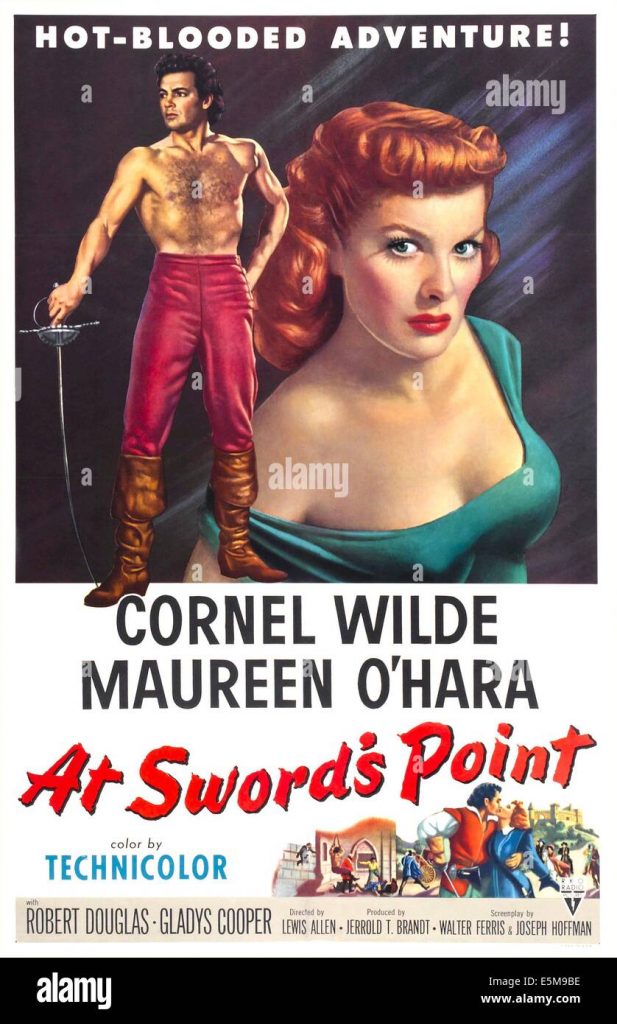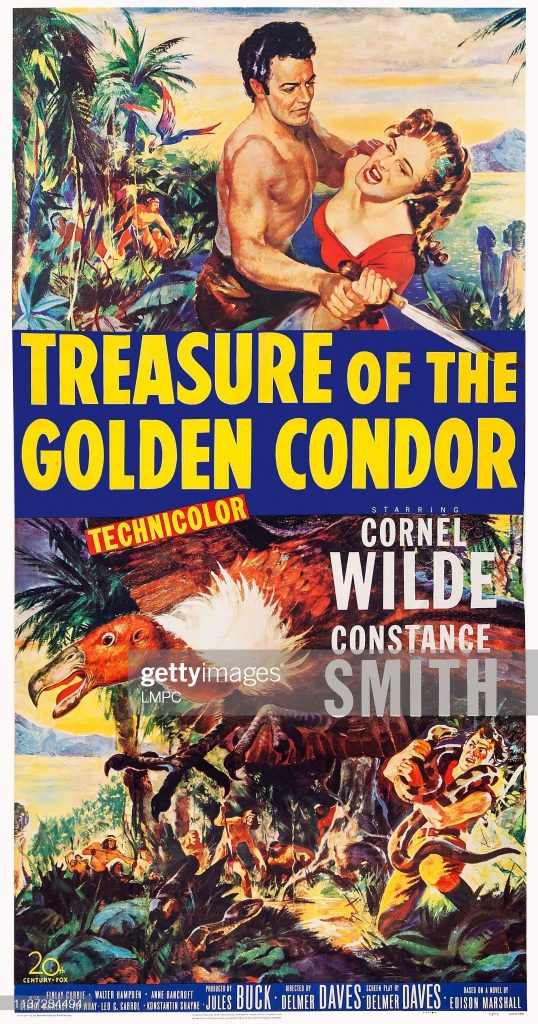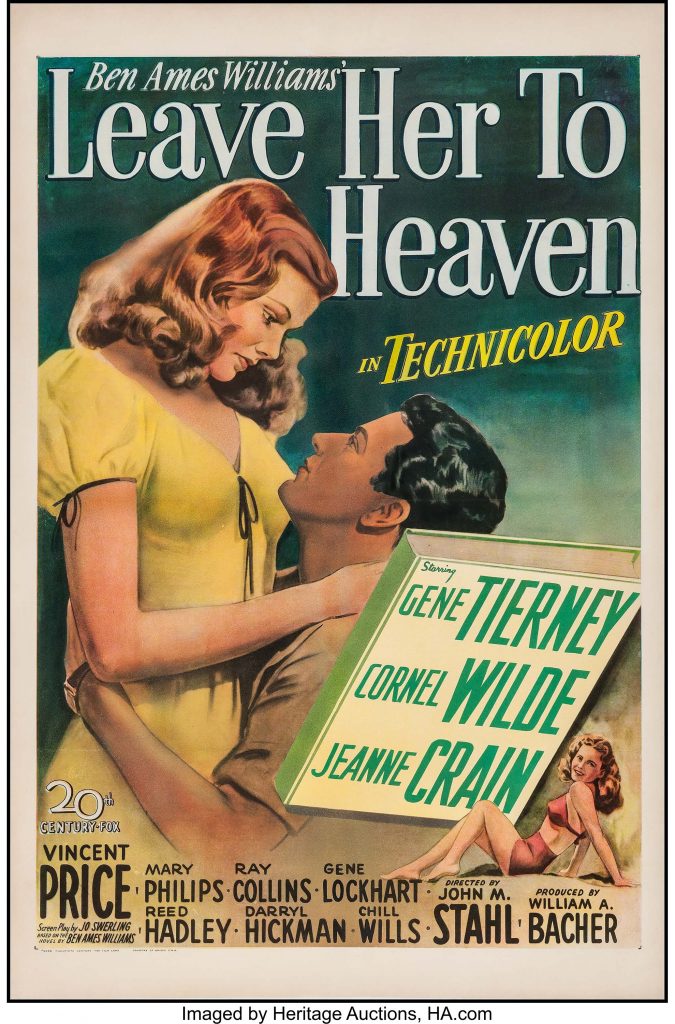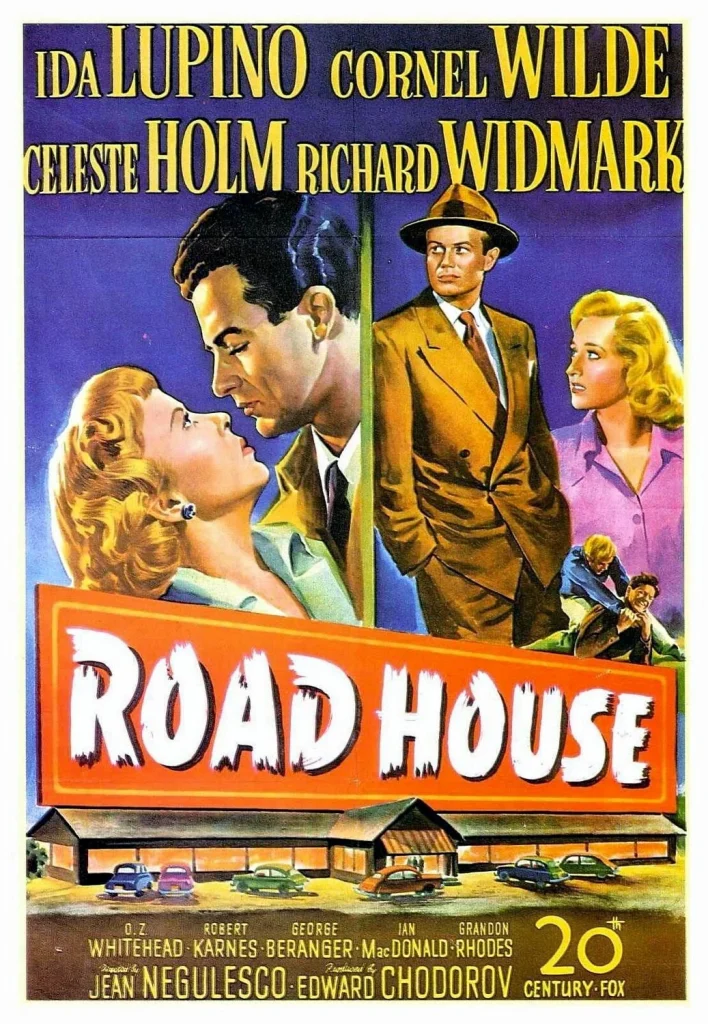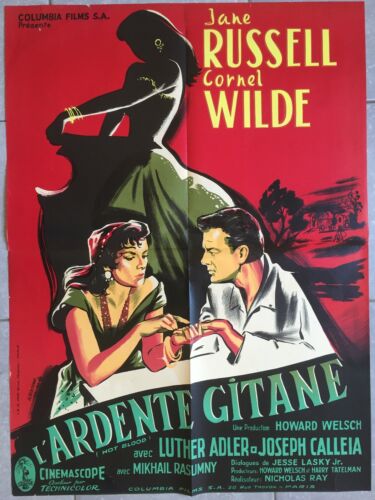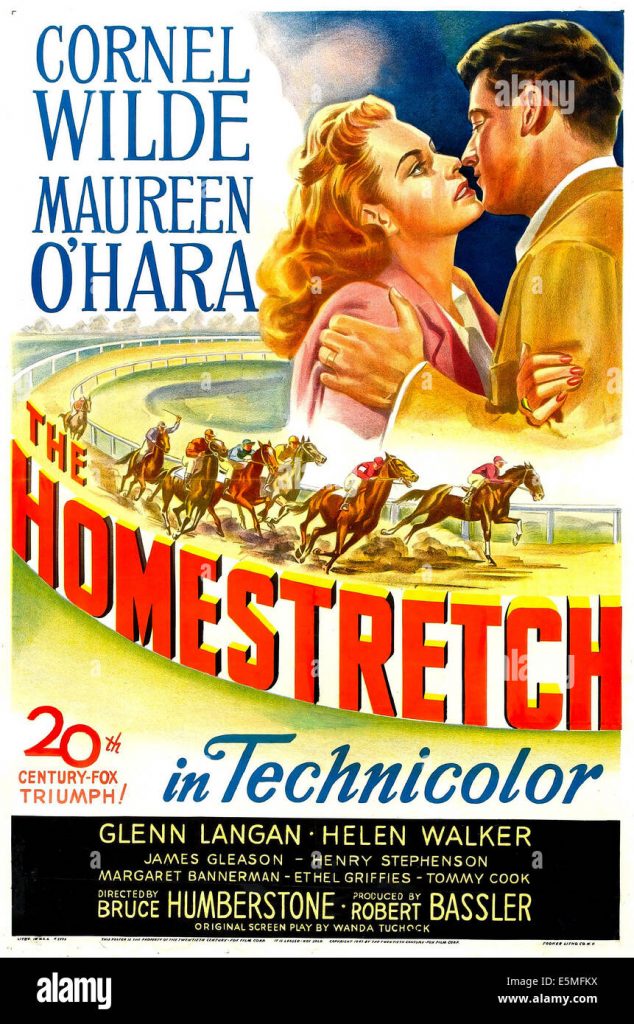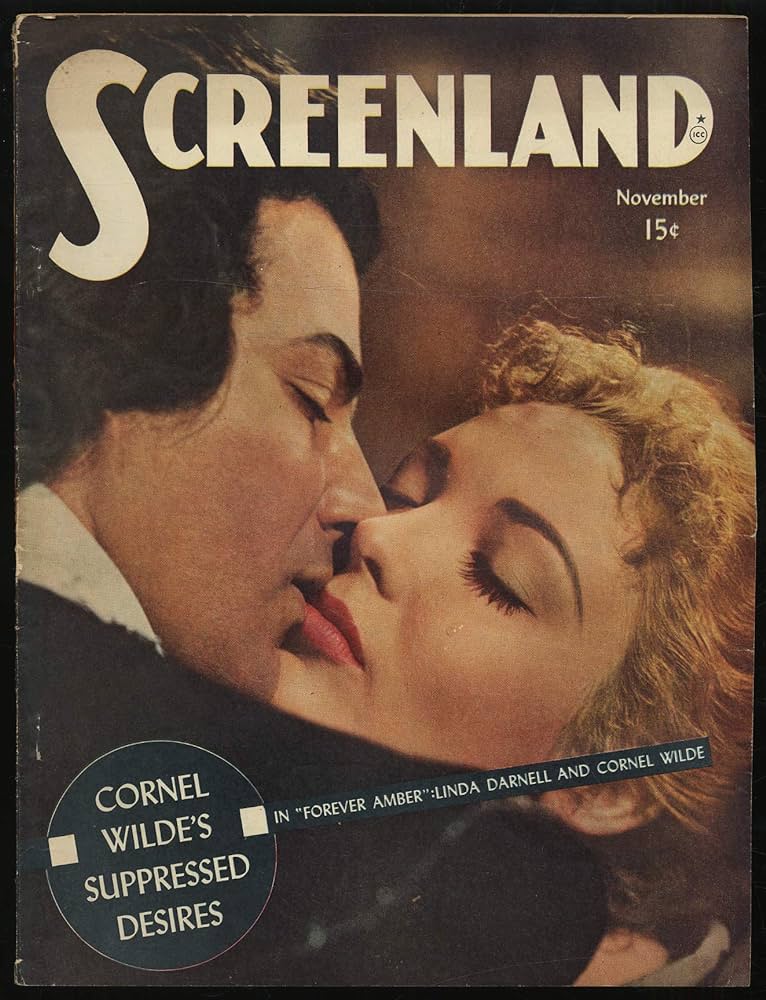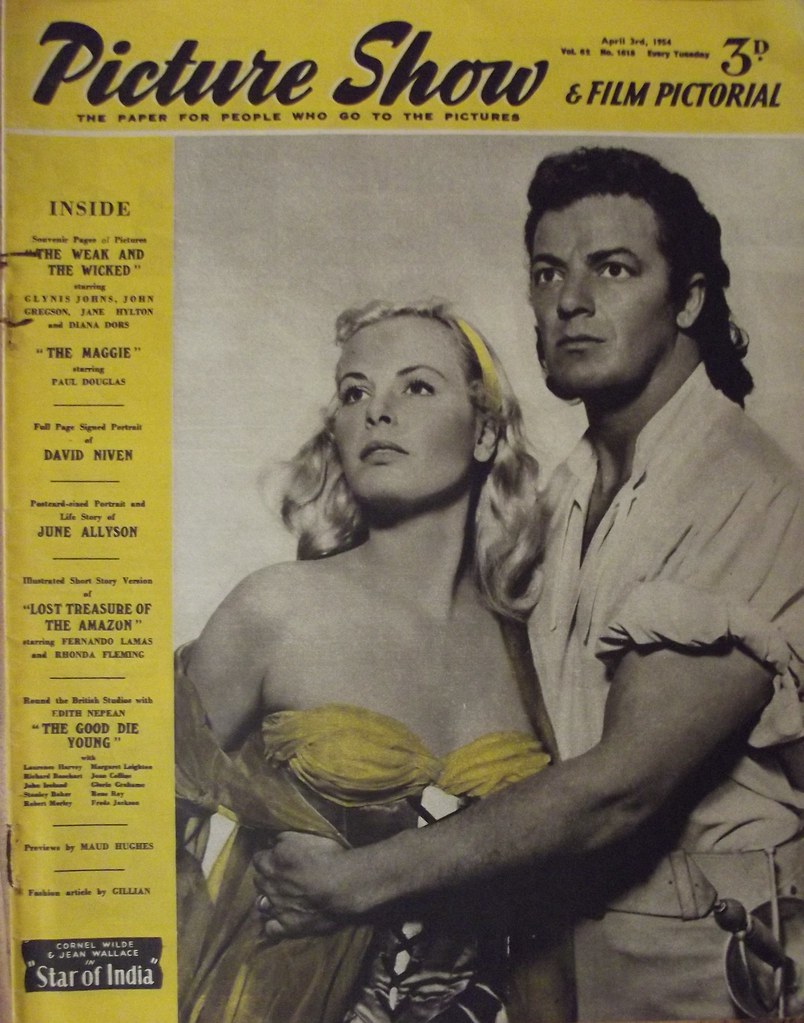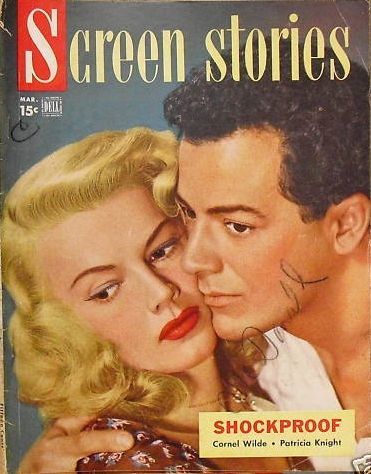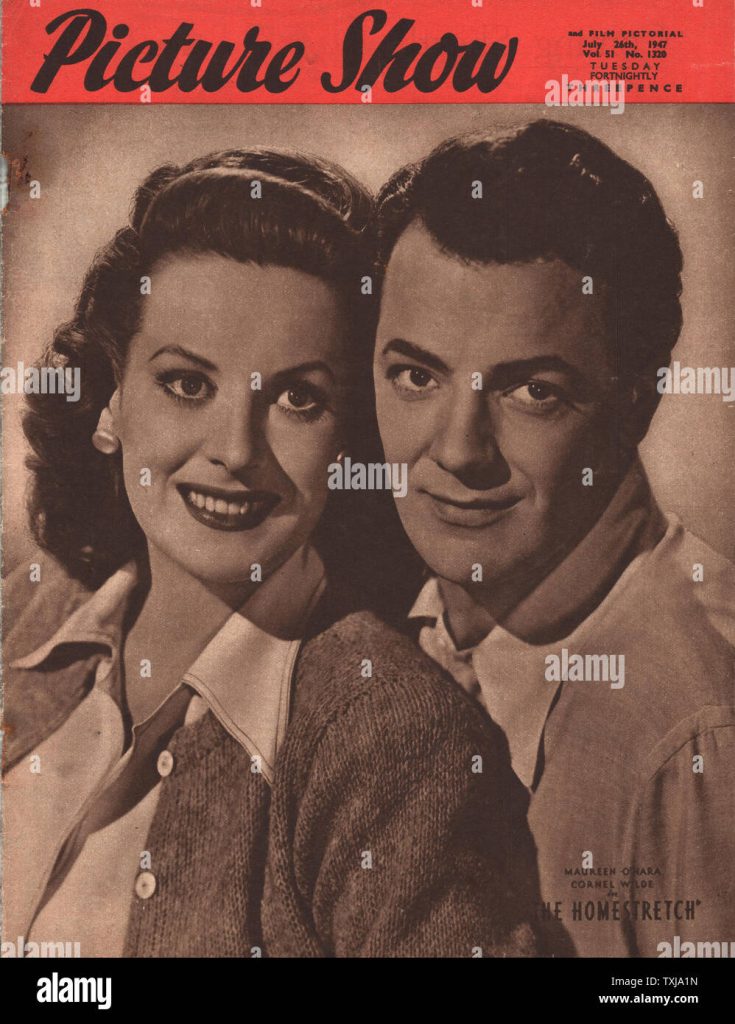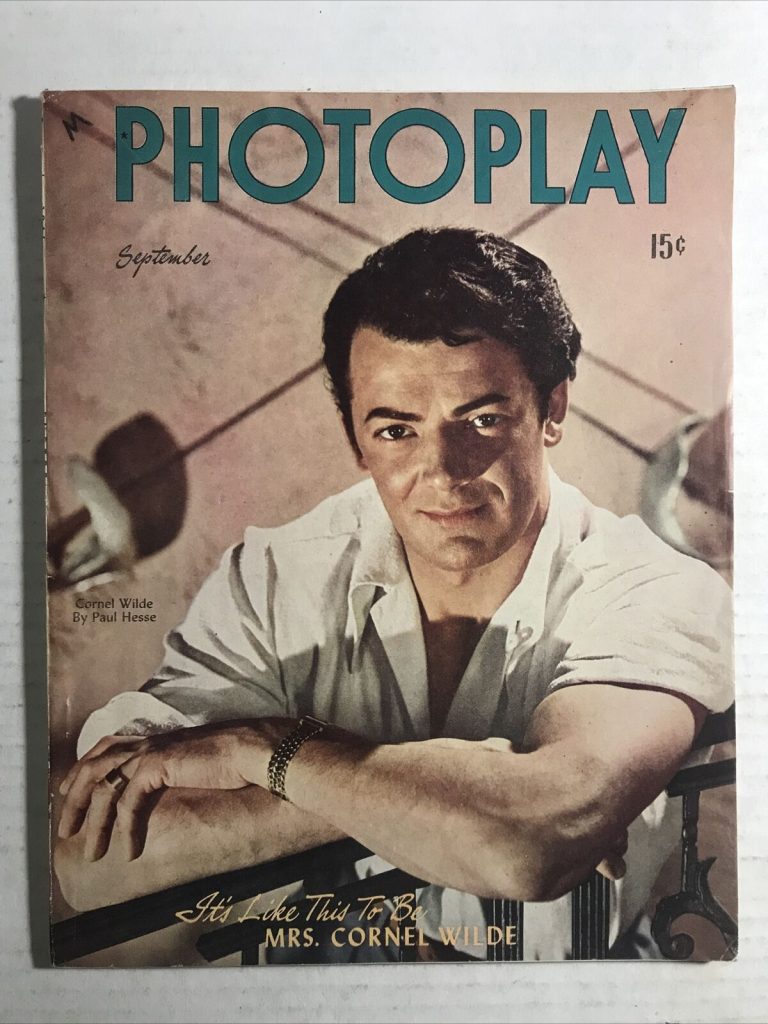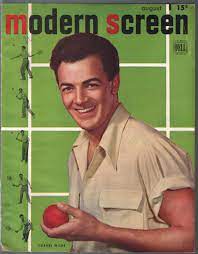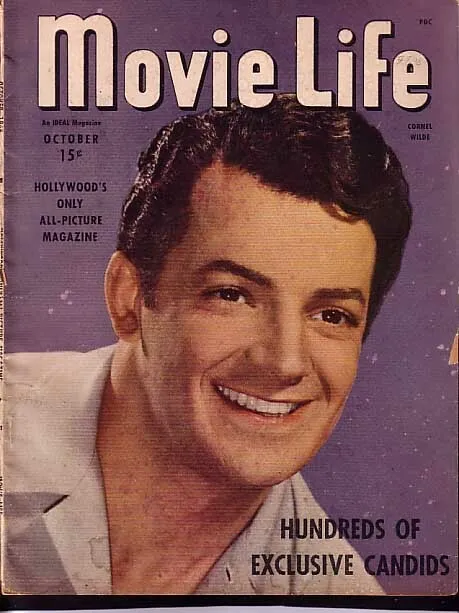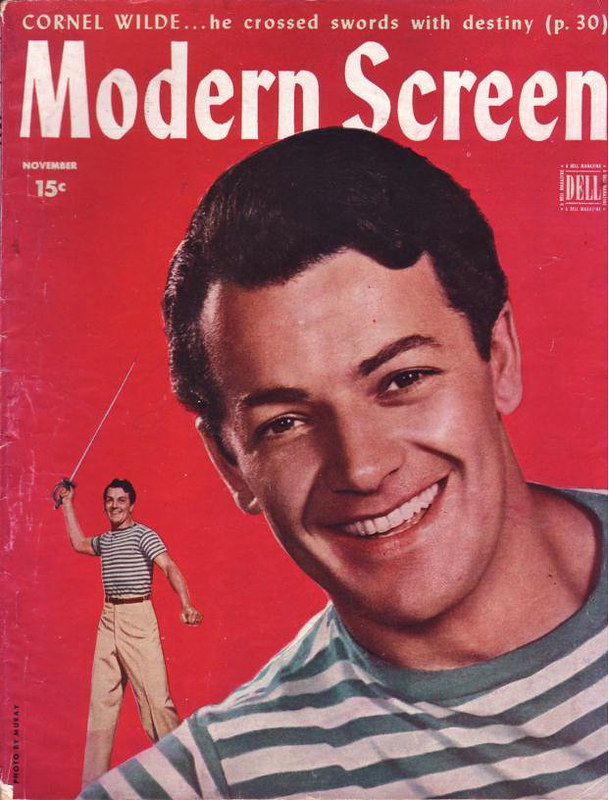


Bradford Dillman was born in San Francisco in 1930. After graduation he joined the United States Marine Corp. He was given a contract with 20th Century Fox and cast as the lead in “A Certain Smile” with Joan Fontaine and Christine Carere. Other films at this time included “Compulsion” with Orson Welles, “In Love and War” with Robert Wagner, Dana Wynter and France Nuyen. He matured into a very capable characted actor and made many films including “Sudden Impact” and “The Way We Were”. He was also a frequent guest star on television. He was long married to the top model and actress Suzy Parker until her death in 2003. “Cinema Retro” interview with Bradford Dillman here.
His IMDB entry:
Dark-haired, Ivy League-looking Bradford Dillman, whose white-collar career spanned nearly five decades, possessed charm and confident good looks that were slightly tainted by a bent smile, darting glance and edgy countenance that often provoked suspicion. Sure enough, the camera picked up on it and he played shady, highly suspect characters throughout most of his career.
The actor was born in San Francisco on April 14, 1930, to Dean and Josephine Dillman. Yale-educated, he graduated with a B.A. in English Literature. Following this he served with the US Marines in Korea (1951-1953) before focusing on acting as a profession. Studying at the Actors Studio, he spent several seasons apprenticing with the Sharon (CT) Playhouse before making his professional acting debut in “The Scarecrow” in 1953.
Dillman took his initial Broadway bow in Eugene O’Neill‘s play “Long Day’s Journey Into Night” in 1956, originating the author’s alter ego character Edmund Tyrone and winning a Theatre World Award in the process. This success put him squarely on the map and 20th Century-Fox took immediate advantage by placing the darkly handsome up-and-comer under contract. Cast in the melodrama A Certain Smile (1958), he earned a Golden Globe for “Most Promising Newcomer” playing a Parisian student who loses his girl (Christine Carère) to the worldly Italian roué Rossano Brazzi. He followed this with a strong ensemble appearance in In Love and War (1958), which featured a cast of young rising stars including Hope Lange and Robert Wagner. More acting honors followed after completing the film Compulsion (1959), which told the true story of the infamous 1920s kidnapping/murder case of Nathan Leopold and Richard Loeb. He went on to share a “Best Actor” award at the Cannes Film Festival with fellow co-stars Dean Stockwell, who played the other youthful murderer, and veteran Orson Welles.
Though he was a magnetic player poised for stardom, Dillman’s subsequent films failed to serve him well and were generally unworthy of his talent. Though properly serious and stoic as the title character in Francis of Assisi (1961), the film itself was stilted and weakly scripted. A Circle of Deception (1960) was a misguided tale of espionage and intrigue, but it did introduce him to his second wife, supermodel-cum-actress Suzy Parker. While A Rage to Live (1965) with Suzanne Pleshette was trashy soap material,The Plainsman (1966) was rather a silly, juvenile version of the Gary Cooper western classic. As a result of these missteps–and others–he began to top-line lesser quality projects or play supporting roles in “A” pictures. His nothing role as Robert Redford‘s college pal-turned Hollywood producer in The Way We Were (1973) and his major roles in the ludicrous The Swarm (1978) and Lords of the Deep (1989) became proof in the pudding. His last good film role was in O’Neill’s The Iceman Cometh (1973), although he did play an interesting John Wilkes Booth in the speculative re-enactment drama The Lincoln Conspiracy (1977) and had a fun leading role in the Jaws (1975)-like spoofPiranha (1978).
Dillman bore up very well on TV over the years, subsisting on a plethora of mini-movies and guest spots on popular series, playing everything from turncoats to frauds and from adulterers to psychotics. He earned a Daytime Emmy for his appearance in The ABC Afternoon Playbreak: Last Bride of Salem (1974) and starred in two series–Court Martial(1965), as a military lawyer, and King’s Crossing (1982), as an alcoholic parent and teacher attempting to straighten out. He also spent a season on the established nighttime soap Falcon Crest (1981) in 1982.
He is the father of five children. One daughter, Pamela Dillman has worked as an actress, narrator, director and teacher of acting. Bradford launched a late-in-the career sideline as an author. The football fan inside him compelled him to write “Inside the New York Giants” (1995), a book that rated players drafted by the team since 1967. Two years later he published his memoirs, the curiously-titled “Are You Somebody?: An Actor’s Life.” He hasn’t been seen on since a few guest star shots on “Murder, She Wrote” in the mid-90s.
– IMDb Mini Biography By: Gary Brumburgh / gr-home@pacbell.net
This IMDB entry can also be accessed online here.












Bradford Dillman (Wikipedia)
Bradford Dillman was born in San Francisco in 1930. After graduation he joined the United States Marine Corp. He was given a contract with 20th Century Fox and cast as the lead in “A Certain Smile” with Joan Fontaine and Christine Carere. Other films at this time included “Compulsion” with Orson Welles, “In Love and War” with Robert Wagner, Dana Wynter and France Nuyen. He matured into a very capable characted actor and made many films including “Sudden Impact” and “The Way We Were”. He was also a frequent guest star on television. He was long married to the top model and actress Suzy Parker until her death in 2003. “Cinema Retro” interview with Bradford Dillman here.
His IMDB entry:
Dark-haired, Ivy League-looking Bradford Dillman, whose white-collar career spanned nearly five decades, possessed charm and confident good looks that were slightly tainted by a bent smile, darting glance and edgy countenance that often provoked suspicion. Sure enough, the camera picked up on it and he played shady, highly suspect characters throughout most of his career.
The actor was born in San Francisco on April 14, 1930, to Dean and Josephine Dillman. Yale-educated, he graduated with a B.A. in English Literature. Following this he served with the US Marines in Korea (1951-1953) before focusing on acting as a profession. Studying at the Actors Studio, he spent several seasons apprenticing with the Sharon (CT) Playhouse before making his professional acting debut in “The Scarecrow” in 1953.
Dillman took his initial Broadway bow in Eugene O’Neill‘s play “Long Day’s Journey Into Night” in 1956, originating the author’s alter ego character Edmund Tyrone and winning a Theatre World Award in the process. This success put him squarely on the map and 20th Century-Fox took immediate advantage by placing the darkly handsome up-and-comer under contract. Cast in the melodrama A Certain Smile (1958), he earned a Golden Globe for “Most Promising Newcomer” playing a Parisian student who loses his girl (Christine Carère) to the worldly Italian roué Rossano Brazzi. He followed this with a strong ensemble appearance in In Love and War (1958), which featured a cast of young rising stars including Hope Lange and Robert Wagner. More acting honors followed after completing the film Compulsion (1959), which told the true story of the infamous 1920s kidnapping/murder case of Nathan Leopold and Richard Loeb. He went on to share a “Best Actor” award at the Cannes Film Festival with fellow co-stars Dean Stockwell, who played the other youthful murderer, and veteran Orson Welles.
Though he was a magnetic player poised for stardom, Dillman’s subsequent films failed to serve him well and were generally unworthy of his talent. Though properly serious and stoic as the title character in Francis of Assisi (1961), the film itself was stilted and weakly scripted. A Circle of Deception (1960) was a misguided tale of espionage and intrigue, but it did introduce him to his second wife, supermodel-cum-actress Suzy Parker. While A Rage to Live (1965) with Suzanne Pleshette was trashy soap material,The Plainsman (1966) was rather a silly, juvenile version of the Gary Cooper western classic. As a result of these missteps–and others–he began to top-line lesser quality projects or play supporting roles in “A” pictures. His nothing role as Robert Redford‘s college pal-turned Hollywood producer in The Way We Were (1973) and his major roles in the ludicrous The Swarm (1978) and Lords of the Deep (1989) became proof in the pudding. His last good film role was in O’Neill’s The Iceman Cometh (1973), although he did play an interesting John Wilkes Booth in the speculative re-enactment drama The Lincoln Conspiracy (1977) and had a fun leading role in the Jaws (1975)-like spoofPiranha (1978).

Dillman bore up very well on TV over the years, subsisting on a plethora of mini-movies and guest spots on popular series, playing everything from turncoats to frauds and from adulterers to psychotics. He earned a Daytime Emmy for his appearance in The ABC Afternoon Playbreak: Last Bride of Salem (1974) and starred in two series–Court Martial(1965), as a military lawyer, and King’s Crossing (1982), as an alcoholic parent and teacher attempting to straighten out. He also spent a season on the established nighttime soap Falcon Crest (1981) in 1982.
He is the father of five children. One daughter, Pamela Dillman has worked as an actress, narrator, director and teacher of acting. Bradford launched a late-in-the career sideline as an author. The football fan inside him compelled him to write “Inside the New York Giants” (1995), a book that rated players drafted by the team since 1967. Two years later he published his memoirs, the curiously-titled “Are You Somebody?: An Actor’s Life.” He hasn’t been seen on since a few guest star shots on “Murder, She Wrote” in the mid-90s.
– IMDb Mini Biography By: Gary Brumburgh / gr-home@pacbell.net
This IMDB entry can also be accessed online here.
New York Times obituary in 2018.
Bradford Dillman, a Broadway and film actor known for his roles in the original Broadway production of “Long Day’s Journey Into Night” and the movie “Compulsion,” died on Jan. 16 in Santa Barbara, Calif. He was 87.
His manager, Ted Gekis, said the cause was complications of pneumonia.
Mr. Dillman began acting professionally in 1953 and had his breakthrough three years later in “Long Day’s Journey,” playing Edmund Tyrone, the peacekeeping younger brother in a deeply dysfunctional family. The director, José Quintero, picked him out of 500 applicants, The New York Times reported in 1959.
It was a very different role from the dark characters he would become known for, but it earned him a 1957 Theater World Award and a contract with 20th Century Fox.
In 1959, Mr. Dillman won a Golden Globe for most promising newcomer, starring that year with Orson Welles and Dean Stockwell in “Compulsion,” a film based on the Leopold and Loeb murders in Chicago.
In the movie, Mr. Dillman portrayed Artie Straus (a stand-in for the real-life Richard Loeb), an arrogant law student from a socially prominent family who persuades a classmate (Mr. Stockwell) to help him commit the perfect crime as a demonstration of their superior intellect.
It would become one of his best-known performances.
“Bradford Dillman emerges as an actor of imposing stature as the bossy, over-ebullient and immature mama’s boy, Artie,” A. H. Weiler wrote in a Times review.
Mr. Dillman, Mr. Stockwell and Mr. Welles shared best actor honors at the Cannes Film Festival.
In an interview with The Times shortly after “Compulsion” was released, Mr. Dillman gave some insight into his acting philosophy, criticizing what he called “ ‘the beat’ acting style.” He said it made a mockery of the Actors Studio and Lee Strasberg’s Method.
“To me this much-touted new ‘technique’ is a reversion to the animalistic, a declaration of spiritual bankruptcy, a shedding of hard-won civilized sentiments like tenderness, honor, self-respect, loyalty, friendship, love,” he said. “All this glaring out at the world from beneath furrowed brows, these shufflings and shamblings and evasivenesses, the self-hate projections, the affected stammerings and word repetitions and vowel swallowings. To me these are ridiculous, infantile.”
The Times’s Lawrence J. Quirk quoted him approvingly and wrote: “Dillman is an individualist and a breaker of rules. He dares to dress neatly. He dares to be a gentleman. He scorns white buckskins, clean or dirty. He doesn’t scratch. He doesn’t mumble. He doesn’t spout phrases like ‘gas it, man!’ He doesn’t hate himself. He isn’t lonely.”
Bradford Dillman was born in San Francisco on April 14, 1930, to Dean Dillman, a stockbroker, and the former Josephine Moore. After attending St. Ignatius High School in San Francisco, he went cross-country to enroll in the Hotchkiss School in Connecticut, where he performed in school plays before graduating and entering Yale.
He continued to act in amateur productions as a student at Yale and, during summer breaks, in Santa Barbara, Calif., where his parents lived. He earned a degree in literature from Yale in 1951. After graduation, he served in the Marines during the Korean War. He was discharged with the rank of first lieutenant in 1953.
After his military service he turned down a scholarship to attend the Royal Academy of Dramatic Arts in London when he was offered a role in an Off Broadway production.
His acting career was prolific, with at least 140 film and television credits. He rarely turned down a job.
He had children, he said, “and had to put food on the table,” he told Variety in 1995, calling himself “a Safeway actor.”
Mr. Dillman played prominent roles in “The Enforcer” and “Sudden Impact,” the third and fourth films in the “Dirty Harry” series, and won a Daytime Emmy Award in 1975 for his work on the TV series “The ABC Afternoon Playbreak.”
In 1973, he returned to Eugene O’Neill’s work, playing Willie Oban in a film adaptation of “The Iceman Cometh.” He also acted occasionally on the TV series “Murder, She Wrote,” starring Angela Lansbury, a friend.
Offscreen, Mr. Dillman was a writer of both fiction and nonfiction. His books include “Inside the New York Giants” (1995) and “Dropkick: A Football Fantasy” (1998), as well as the novels “That Air Forever Dark” (2001) and “Kissing Kate” (2005). He also wrote a memoir, “Are You Anybody? An Actor’s Life” (1997).
Mr. Dillman was married twice: to Frieda Harding McIntosh from 1956 to 1962, and to Suzy Parker, a model and actress, from 1963

























































